

FIND THE PERFECT FIELD TRIP
Search by geographic area.
- Hot Springs
- Little Rock
- Los Angeles
- San Francisco
- Statewide / Region
- Daytona Beach
- Fort Lauderdale
- Gainesville
- Jacksonville
- Orlando-Metro
- Palm Beach Metro
- Space Coast
- Tallahassee
- St. Augustine
- St Petersburg-Clearwater
- Atlanta-Metro
- Chicago-Metro
- Springfield
- Central Region
- East Region
- Indianapolis
- North Region
- South Central Region
- South Region
- West Region
- Bowling Green
- Baton Rouge
- New Orleans
- Baltimore-Metro
- The Berkshires
- Boston-Metro
- Cape Cod/Plymouth
- Greater Lowell
- Greater Springfield
- Capital-River Region
- Delta Region
- Gulf Coast Region
- Hills Region
- Pines Region
- Jefferson City
- Kansas City
- Springfield-MO
- Delaware River Region
- Gateway Region NJ
- Greater Atlantic City
- Shore Region
- Skylands Region
- Southern Shore Region
- Capital District Region
- Central New York Region
- Finger Lakes Region
- Hudson Valley Region
- Long Island
- Mohawk Valley Region
New York City
- North Country Region
- Southern Tier Region
- Western New York Region
- Canton Ohio
- Cincinnati Ohio
- Cleveland Ohio
- Columbus Ohio
- Oklahoma City
- Allegheny Mts. & Valleys
- Gettysburg/York
- Harrisburg-Metro
- Lakes & Erie Regions
- Lancaster-Metro
- Lehigh Valley
- Philadelphia Metro
- Pittsburgh & Laurel Highlands
- The Poconos
- Scranton/Wilkes-Barre
- Chattanooga
- East Tennessee
- Middle Tennessee
- The Smokies
- West Tennessee
- Bryan - College Station
- Corpus Christi
- Dallas/Fort Worth
- Panhandle Plains Region
- San Antonio
- Central Virginia
- Chesapeake Bay Region
- Coastal Virginia -Eastern Shore
- Coastal Virginia-Hampton Roads
- Northern Virginia
- Shenandoah Valley
- Southern Virginia
- Southwest Virginia-Blue Ridge Highlands
- Southwest Virginia-Heart of the Appalachia
- Virginia Mountains
- Martinsburg
- Madison Wisconsin
SERVING SCHOOL, SCOUT, CAMP, AND HOMESCHOOL GROUPS FROM EARLY CHILDHOOD THROUGH COLLEGE
You Can Also Find
Featured field trips.

Cathedral Caverns State Park
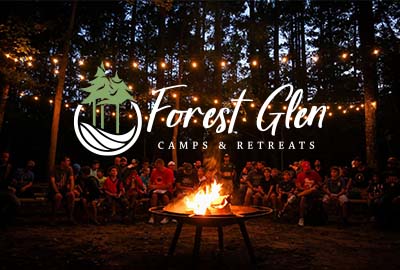
Forest Glen Camps & Retreats
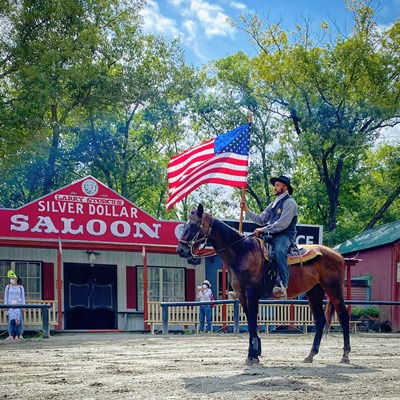
Wild West City
featured destinations

MASSACHUSETTS

SOUTH CAROLINA

featured field trips
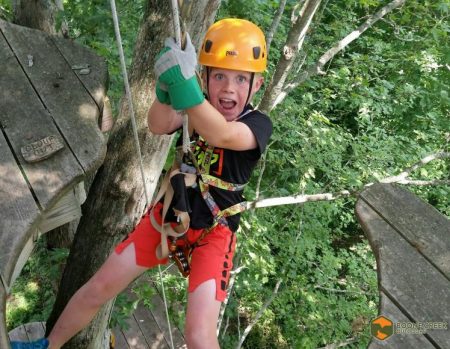
Boone Creek Outdoors
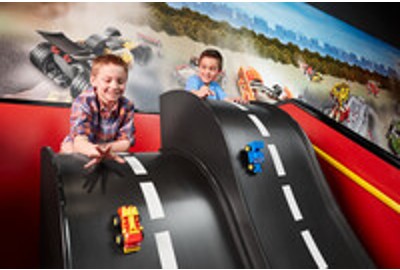
LEGOLAND Discovery Center Chicago
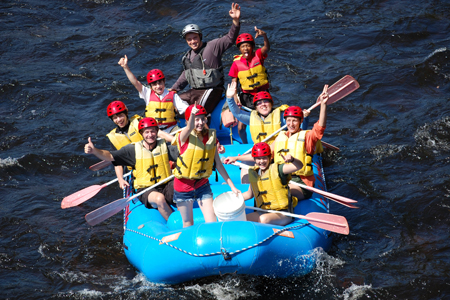
Crab Apple Whitewater
field trip lesson plans

Each month, we raffle a prize to show appreciation for your hard work with students, scouts, and campers. It’s Easy & Just A Click Away
This Month’s Prize is a $50 Amazon Card
SCHOOL ASSEMBLY & OUTREACH PROGRAMS

Dialed Action Sports

Awesome Laser Assemblies

DINOSAURS ROCK® & Other Science Fun
FUNDRAISING FOR FIELD TRIPS
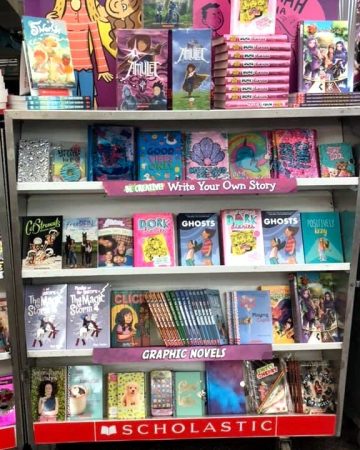
Scholastic Book Fair
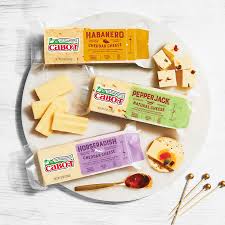
Flower Power Fundraising
FieldTripDirectory.com (formerly ClassTrips.com and CampDirectorsResources.com) offers field trip ideas for class trips, scout group trips, camp group field trips, and homeschool group field trips—early childhood through college. Search for class trips by geographic area, distance, and venue name or keyword. Day class trips are divided by curriculum and subject area:
- ARTS & ENTERTAINMENT Find art museums, theater, dance, and music concert field trips.
- EARLY CHILDHOOD Find class trips to children’s museums, petting zoos, and kids’ shows.
- HISTORY/SOCIAL STUDIES View history museums, government & civics, historic sites, living history museums, and multicultural field trip ideas.
- LIFE SKILLS Find team building field trips, health & safety exhibits, and character education experiences.
- SCIENCE & NATURE Find aquariums, botanical gardens, environmental studies & nature centers, farms & mazes, planetariums, science museums, STEAM & STEM field trips, dinosaur exhibits, and zoos.
- RECREATION Find field trip ideas for adventure parks, ropes courses, ziplines, boat excursions, amusement parks, waterparks, kayaking, rafting, tubing, laser tag paintball, roller skating rinks, ice-skating rinks, mini-golf attractions, indoor amusement & recreation centers, and outdoor amusement & recreation centers.
Overnight field trips include trips to NYC, trips to Boston, trips to Philadelphia, trips to Washington, DC, trips to Chicago, trips to Atlanta, trips to Austin, and other historic cities throughout the US. Retreats are available for environmental education, team building, and recreation. We created field trip lesson plans to help teachers, scout leaders, camp counselors, and homeschool parents provide an enriching experience for their groups. We know funds for class trips are limited, so we’ve included grants for field trips that cover admission, transportation, and more. It’s important that students and youth explore new environments, learn about other cultures, and develop an understanding of inclusivity as part of the educational process. People learn in different ways—through hearing, seeing, touching, talking, or doing. Class trips can provide a multi-dimensional learning experience. FieldTripDirectory.com can help you find the right trip for your group. A world of experiences is just a click away at FieldTripDirectory.com.
- Rules/Help/FAQ Help/FAQ
- Members Current visitors
- Interface Language
Follow along with the video below to see how to install our site as a web app on your home screen.
Note: This feature may not be available in some browsers.
- English Only
Preposition: for / on / in a field trip
- Thread starter jumpita
- Start date Oct 15, 2008
Senior Member
- Oct 15, 2008
Hi everyone, I've seen/heard all these sentences: - i was out FOR a field trip - " " " IN " " " - " " " ON " " " They are all correct? They have different meanings? Thanks.
Only 'on' works for me. Rover
sound shift
I am of the same opinion as Rover.
- Nov 7, 2010
Dr. King visited India in 1959, more than a decade after Gandhi’s death, seeking to draw from the taproot of his moral power, in a trip publicized in India and the United States. New York Times (subscription, free) Dear all, Could you please tell me whether the preposition "in" also works for you? If yes, what is the difference between "in a trip" and "on a trip"? Thanks. LQZ
Member Emeritus
Over here in the US, I agree with Rover and Sound: "On" is the only correct one.
- Our Mission
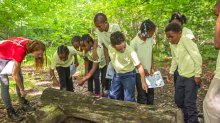
Yes, Field Trips Are Worth the Effort
Culturally enriching trips can boost grades and decrease absences and behavioral infractions, new research reveals.
As a teacher, Elena Aguilar often looked for opportunities to get her students out of the classroom and into different neighborhoods or natural environments. “We did the usual museum trips and science center stuff, but I loved the trips which pushed them into unfamiliar territory,” writes Aguilar , an instructional coach and author. Nudging kids out of their comfort zones, she says, “taught them about others as well as themselves. It helped them see the expansiveness of our world and perhaps inspired them to think about what might be available to them out there.”
Aguilar’s thinking made an impact: 15 years after traveling with her third-grade class to Yosemite National Park, a student contacted Aguilar on Facebook to thank her for the life-changing excursion. “You changed our lives with that trip,” the student wrote. “It's what made me want to be a teacher, to be able to give that same gift to other kids.”
As schools grapple with pandemic-related concerns about balancing in-seat instructional time with non-essentials like trips, new research published in The Journal of Human Resources argues that field trips, and the vital educational experiences that they provide—whether it’s a visit to a local museum or a big commitment like Aguilar’s national park trip—deliver a host of positive social and academic outcomes and are worth the effort.
“The pandemic should not keep schools from providing these essential cultural experiences forever,” asserts Jay P. Greene , one of the study’s co-authors and a senior research fellow at the Heritage Foundation, in an opinion piece for the Daily News . “If schools make culturally-enriching field trips an integral part of the education experience, all students—especially those whose parents have a harder time accessing these experiences on their own—would benefit.”
In the study, researchers assigned more than 1,000 fourth- and fifth-grade students in Atlanta to two groups. One group participated in three to six “culturally-enriching” field trips—visits to an art museum, a live theater performance, and a symphony concert—while students in the control group stayed put in class. The outcome? Kids in the field trip group “scored higher on end-of-grade exams, received higher course grades, were absent less often, and had fewer behavioral infractions,” compared to students in the control group, according to a ScienceDaily brief . Benefits lasted two to three years, Greene writes, and were “most visible when students were in middle school.”
“We are able to demonstrate that a relatively simple intervention—and we consider it pretty low-touch; three field trips in a year, maybe six field trips in two years—can actually have some substantial impacts,” says lead study author Heidi Holmes Erickson in an interview with The 74 . “They’re not just limited to social benefits. It shows that smaller interventions can actually have some significant effects on academics as well.”
Field trips aren’t a threat to in-class instruction, Erickson notes, they’re a tool to help bolster engagement and expand students’ horizons. “It's possible to expose students to a broader world and have a culturally enriching curriculum without sacrificing academic outcomes, and it may actually improve academic outcomes,” Erickson says. Far from harming test scores, the researchers found that culturally rich excursions reinforce academics and “students who participated in these field trips were doing better in class.”
Meanwhile, class trips don't need to be elaborate productions to make an impact: small excursions outside the classroom—"low-touch," as the researchers call them—can pack a punch. Here’s how three educators recommend dialing it back with low-stakes options that are both engaging and stimulating for students, but might not require days to prepare and plan:
Make Them Bite-Sized : Instead of allocating an entire day to a field trip, educational consultant Laurel Schwartz takes her classes on micro field trips , or “short outings that can be completed in a single class period.” These real-world encounters, she says, are especially beneficial for English learners and world language students. A micro field trip to a nearby park or around school grounds, for example, can be a great opportunity to “enhance a unit on nature and wildlife while reinforcing vocabulary for senses, colors, and the concepts of quantity and size,” Schwartz writes. “Afterwards, students might write descriptive stories set in the place you visited using vocabulary collected and defined together by the class.”
Try Teacher-Less Trips : To encourage exploration and learning outside of the classroom, former social studies teacher Arch Grieve removes himself from the equation with teacher-less field trips rooted in students’ local communities. Grieve only suggests options that are directly tied to a unit being discussed in class—like attending a talk at a local university or visiting a museum or cultural festival—and offers extra credit to incentivize students. “These trips allow for a greater appreciation of my subject matter than is possible in the school setting, and perhaps best of all, there's little to no planning involved.”
Explore Virtual Options : It may not be as fun as visiting in person, but the Internet makes it possible to visit museums like The National Gallery of London and The Vatican Museums without leaving the school building. Middle school English teacher Laura Bradley likes to search the Museums for Digital Learning website by topic, keyword, and grade level, to find lessons and activities that meet her unique curricular needs. The site grants access to digitized museum collections, 3D models, audio files, documents, images, and videos.

How to Write a Field Trip Report

How to Create a Nursing Practicum Journal
Visiting the Air and Space Museum in Washington, D.C., or touring the wetlands in Florida are two examples of exciting and educational field trips for middle school and high school students. You might take notes during your trip, so you can come up with an interesting thesis for your assigned field trip report. For example, you might write about a shuttle launching or an unusual creature who lives in the wetlands. Field trip reports should include a compelling introduction, a well-structured body and a strong conclusion. Discuss your favorite elements of the trip, so your assignment reads like a personal observation report or narrative essay.
Lead with Interesting Introduction
Start your introduction with information that leads up to your thesis statement, which is usually the last sentence of your introduction. You might focus on an interesting anecdote from your trip or discuss particular features that made an impression on you. Use these tidbits to develop your thesis. For example, you might create a three-point thesis, such as "The wetlands in Florida have vulnerable ecosystems, experience climate changes and endure seasonal flooding." If your teacher wants a technical field trip report, start with an abstract -- a brief summary paragraph -- that clearly explains where you went and what you learned during the field trip. Use research or literature to support your statements in your field trip report. For example, if you visited a local arboretum, you might use information from display placards to describe your favorite types of foliage and their seasonal life cycles.
Provide Facility Details
Discuss the field trip location by describing the facilities and explaining what you saw or experienced. For example, if you visited an astronomy observatory, discuss viewing areas and the telescopes you used. If you were using inside telescopes, describe the height of the domed ceilings, the different types of lighting and the approximate distance to the stars or planets. By providing extensive details, you show your teacher that you were paying close attention to the instructor, or in the observatory example, to the astronomer's explanations. You might also discuss any handouts or educational materials you received during the field trip.
Discuss Surprising Findings
Explain in your field trip report any new information or details that took you by surprise and include statistical data to support your findings. This type of data shows that you learned something during the field trip. For example, if you visited an underground cave, you might discuss a particular type of bat or an unusual plant that grows in the cave. Use outside research or information from the tour guide to support your data, and cite your references clearly, so your teacher knows where you got the information. When possible, use academic journals or magazines to support details in your observation report of the field visit.
End with Compelling Conclusion
Conclude your field trip report with a summary of your overall experience, including reasons why others might want to visit the location. You might include a brief summary of a personal discussion you had with the tour guide or field trip facilitator or cite a distinguishable fact from your research. If you participated in any hands-on activities or your class was allowed to see behind the scenes, you might end your paper by discussing those highlights. For example, if you visited a science center, you might discuss fossils you examined, electricity experiments you participated in, or hands-on experiments with wind tunnels that allowed you to examine weather patterns.
Related Articles

How to Create an Animal School Project

How to Write a Practicum Report
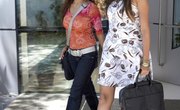
How to Write a Short Report on Job Shadowing

How to Write Post-Doctoral Career Goals

How to Write an Autobiography in the 7th Grade

Does APA Style Recommend Using the Present Tense?

How to Write a Timeline Report

How to Create a Life Map
- Clayton State University: Natural Sciences: Report Format
- Purdue University Online Writing Lab: Using Research and Evidence
- University of Arkansas Newswire: Research: School Field Trips Give Significant Benefits
- Common Core State Standards Initiative: English Language Arts Standards: Writing: Grade 9-10
As curriculum developer and educator, Kristine Tucker has enjoyed the plethora of English assignments she's read (and graded!) over the years. Her experiences as vice-president of an energy consulting firm have given her the opportunity to explore business writing and HR. Tucker has a BA and holds Ohio teaching credentials.
- More from M-W
- To save this word, you'll need to log in. Log In
Definition of field trip
Examples of field trip in a sentence.
These examples are programmatically compiled from various online sources to illustrate current usage of the word 'field trip.' Any opinions expressed in the examples do not represent those of Merriam-Webster or its editors. Send us feedback about these examples.
Word History
1926, in the meaning defined above
Dictionary Entries Near field trip
field trial
Cite this Entry
“Field trip.” Merriam-Webster.com Dictionary , Merriam-Webster, https://www.merriam-webster.com/dictionary/field%20trip. Accessed 28 Apr. 2024.
Kids Definition
Kids definition of field trip, more from merriam-webster on field trip.
Thesaurus: All synonyms and antonyms for field trip
Subscribe to America's largest dictionary and get thousands more definitions and advanced search—ad free!

Can you solve 4 words at once?
Word of the day.
See Definitions and Examples »
Get Word of the Day daily email!
Popular in Grammar & Usage
More commonly misspelled words, commonly misspelled words, how to use em dashes (—), en dashes (–) , and hyphens (-), absent letters that are heard anyway, how to use accents and diacritical marks, popular in wordplay, the words of the week - apr. 26, 9 superb owl words, 'gaslighting,' 'woke,' 'democracy,' and other top lookups, 10 words for lesser-known games and sports, your favorite band is in the dictionary, games & quizzes.


55 Simple and Memorable Field Trip Ideas
We all know that field trips are fun- we have all been there. But when you are on the side that you have to plan them, it becomes a bit less fun, and a lot more stressful. It does not really need to be, though, because there are so many fun things out there that your middle schoolers will love to do.
In this article, we will give you 29 excellent field trip ideas. And remember, these are just ideas- there are tons more out there! Get creative!
I don’t know what it is about the zoo, but there is just something about the zoo that makes it one of the best places on earth. And this is true for most ages, not just preschoolers. Running around, finding favorite animals, discovering new ones, and learning more about animals that may be endangered is so fun.
Your middle schoolers will think so, too. Many zoos offer free (or at least discounted) admission for field trips, as long as they’re booked in advance. ( Source )
2. Water Park
Visiting a water park is a great way to either say goodbye to warmer weather or to celebrate the return of it. The best thing about many water parks is that they have arcades too, so those who do not like swimming can just try to win the giant plushies and lava lamps that we all envied as children.
3. Art Museum
An art museum is a great way to infuse culture into middle schoolers. Most are old enough to know museum etiquette, and the museum can introduce them to so many different art styles, types of people, and countries. They may come out thinking about art in a completely different way.
4. State and National Parks
If you live by a state or national park, consider yourself incredibly lucky, and then go get in there! This is a great way to expose middle schoolers to nature, and it helps them to love the outdoors if they do not already. State and national parks are beautiful, and they give the perfect opportunity to teach about the importance of taking care of the environment!
5. Movie Theater
You can never go wrong with a movie. All kids like movies. As long as it’s rated G or PG, and you have parental approval, the employees will be ready with popcorn and drinks in excess for your middle schoolers to enjoy.
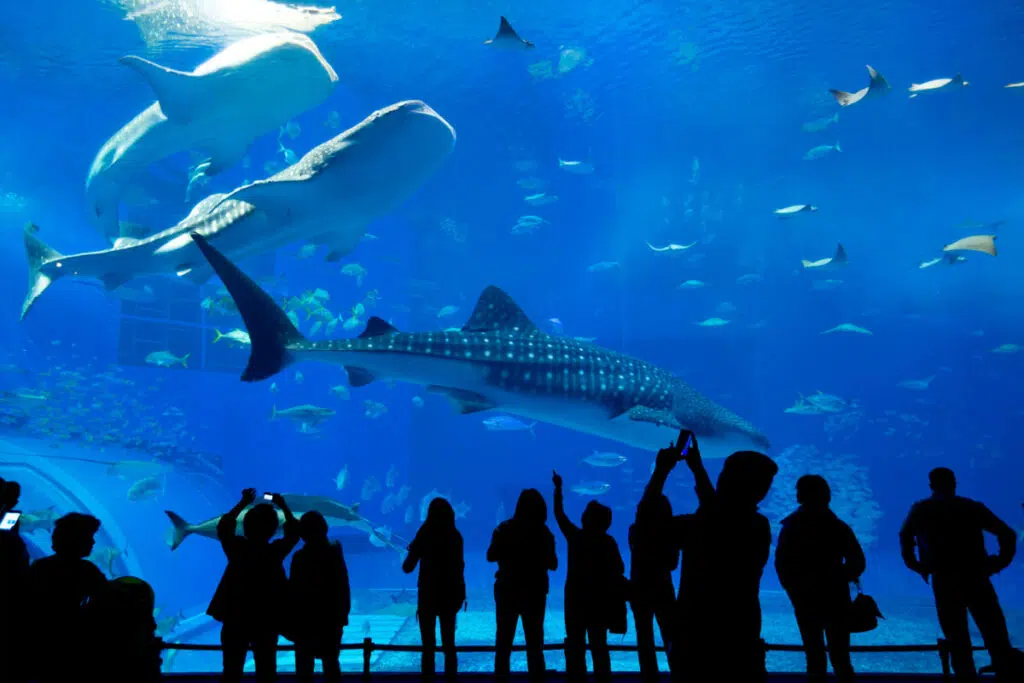
6. Aquarium
Like the zoo, it is impossible to go wrong with a trip to the aquarium. Many aquariums have rehabilitated animals, which presents a great opportunity to teach about the importance of picking up after ourselves, and not throwing trash in the ocean. It is never too early to help kids become environmentally conscious.
7. Botanical Gardens
Botanical gardens give the wonderful chance to be outside, and it provides a controlled environment to do so. They are beautifully landscaped, and they usually have pretty fountains and waterfalls that provide a really calming atmosphere.
An added bonus: it is easy to reinforce what your middle schoolers have been learning about plants in science classes with what you see!
8. An Actual Theatre
Exposing middle schoolers to the arts should be considered an essential part of their education. And, what’s more, going to plays just makes kids feel mature and important. Maybe it is just because of the way the phrase “going to the theatre” sounds when someone says it with a British accent. If that wasn’t enough, then the fact that education in fine arts is proven to increase students’ self-confidence, self-understanding, communication skills, and cognitive abilities. ( Source )
9. Go on a Hike
This is a good field trip for many reasons. Exercising is an important thing to get in the habit of at a young age, and nature is something that everyone should appreciate. And, as if that was not enough, learning about rocks and rock formations is fascinating, too. This is a great way to combine what you’re teaching in class with what the kids are experiencing in real life.
10. Planetarium
The planetarium is another one of those places that are impossible for someone to not enjoy, even if they are starting to act more and more like a teenager. Besides, middle schoolers will understand the concepts and words used at the planetarium a lot better than elementary schoolers would.
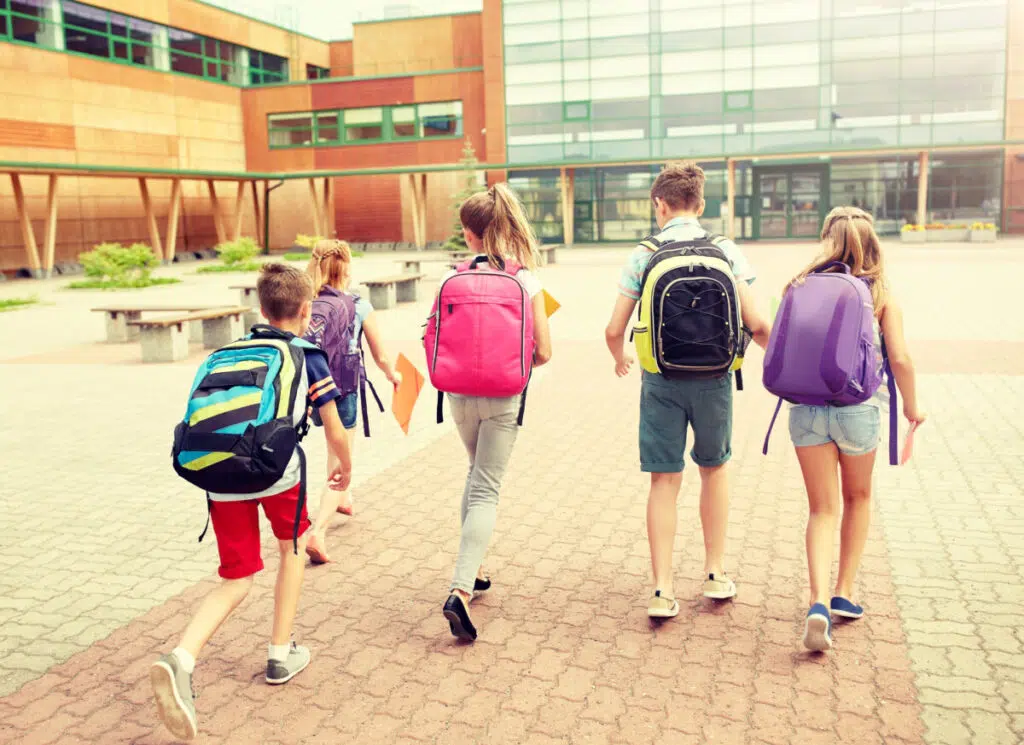
11. Local High School
If there is one thing middle schoolers love, it is that they are going to be in high school soon. Take advantage of that! Take them to high school productions of plays, on tours of the high school they will be going to, and to other high school concerts and athletic events.
12. Local Colleges
While college is still far off for middle schoolers, it’s never too early to give them a good impression of college. Communicate how important a college education can be, and do not forget to mention how fun college life is, either. Get them excited about college before the application process rolls around. The best part about this trip: it’s free!
13. Library
Going to the local library is always a good idea. There is so much to learn (Dewey Decimal System, anybody?), and it is a great way to encourage kids to read. Making this trip coincide with a book report project or readathon might help them to check out books, too!
14. Government Buildings
A government building may be fun to tour. This includes things like the state Capitol building, or maybe even a local government office. There are often tours of the bigger buildings, and these are great opportunities to help students learn more about the government system in our country.
15. Local Festivals
Taking your middle schoolers to local festivals is another great field trip idea. Every town has some sort of interesting festival that they are known for. Take advantage of teaching the kids about the history of their town! Some examples are music festivals, farmers’ markets, local races, and holiday events.
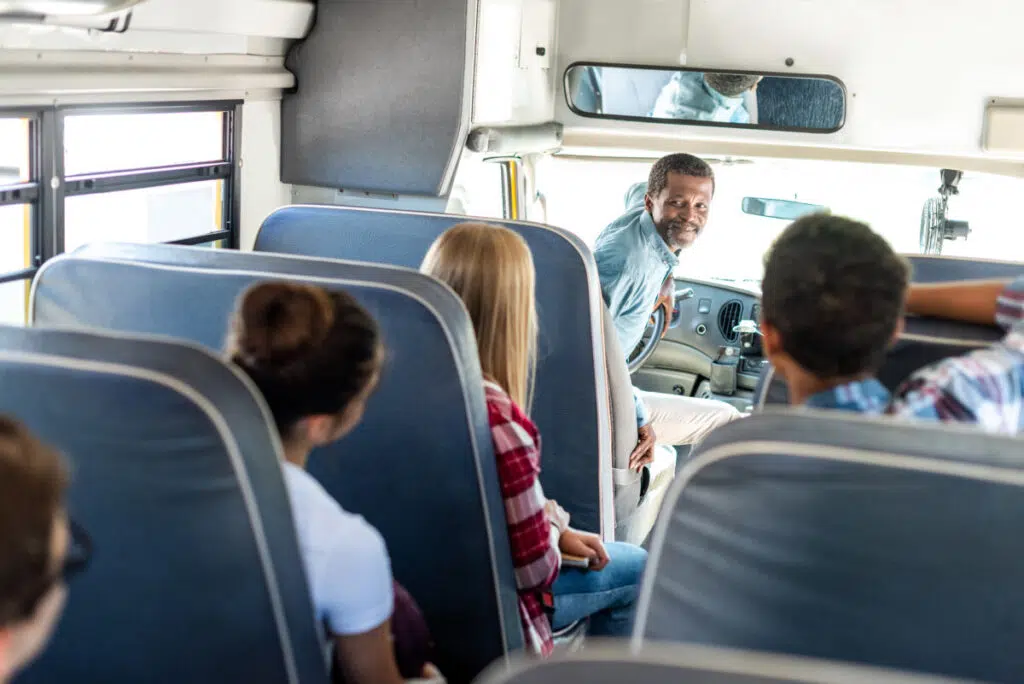
16. Railroad
Local railroads may be hard to come by, but if you are lucky enough to have one in your area, they have tons of history. In addition to this, taking train rides is so much fun. Middle schoolers will love learning about the history of the railroad, taking a ride, and let’s be honest- the concessions on the train will help, too.
17. Local Factories
Going to local factories or businesses is another really great opportunity for middle schoolers. Exposing them to how things work is a great way to help them on the path toward finding out what they want to do in their life. When they see how many types of businesses work, they can better figure out what they like and what they don’t.
18. Amusement Park
Amusement parks are tons of fun. That said, they do require a bit more effort as a field trip. Especially if you are a public school teacher taking 20-30 kids with you, you will need chaperones, permission slips, and plenty of focus, because middle schoolers can wander off.
19. Just a Regular Park
This one is almost effortless, and it is still so much fun. Going to a park, sitting in nature, having a picnic, and then just playing exploring is so good for kids. Getting that time to just relieve stress is key to creating a balanced lifestyle for middle schoolers.
20. Historical Monuments
Historical monuments are there for a reason. They exist to teach us about the people and events that came before us. So why not introduce your middle schoolers to these amazing monuments? They are beautifully built, and being in a historical spot to learn about something that happened before is such a cool experience. What if there is not a monument in your town? There probably is, but if not, a neighboring town will definitely have one.
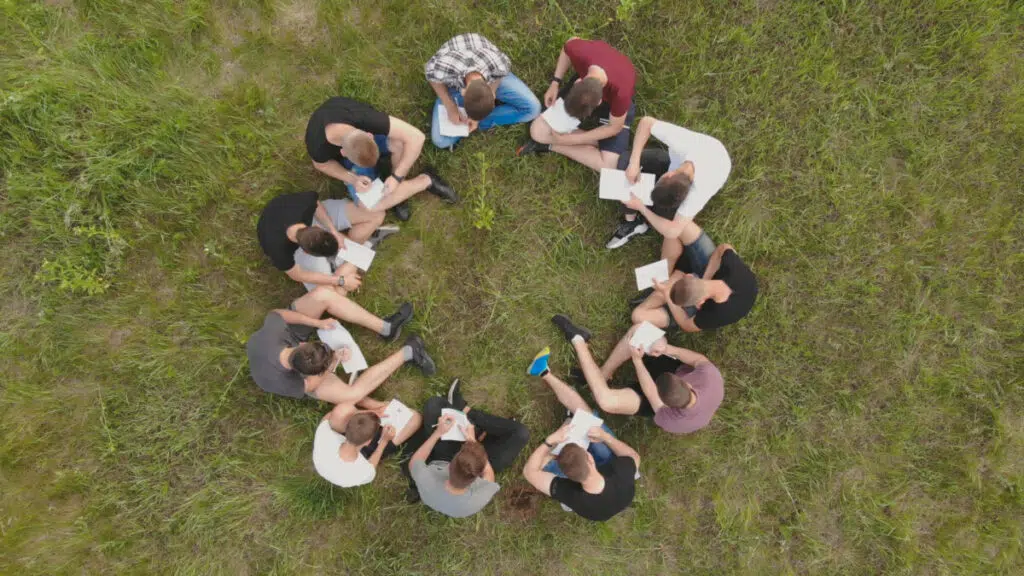
Caving is such a blast. If you live near a cave, taking middle school students caving would be a fantastic field trip. Before you go, make sure you check the difficulty level of the cave, so that everybody can participate. This is a great way to either introduce or just reinforce what students are learning about rocks, erosion, weathering, and more.
22. Historical Buildings, Homes, or other Sites
This is a great way to learn about specific people that may have had a huge influence on your town, organizations that shaped how your town functioned, or just other historical events that may have caused your town to be built in the first place.
Middle schoolers will love seeing places that appear in books they have read or movies they have seen, and if they are not familiar, they will just enjoy seeing the collection of old things.
23. Local Fire Station
Visiting the local fire station would be a very fun field trip for those who have dreams of being a fireman, but it will also be fun for those who don’t. Kids find it fascinating to learn about the process of it all: seeing the fire station, the fire trucks, and asking the firemen what their typical day looks like is a great way to get them engaged.
24. Local Police Station
It’s the same for the local police station. Not only will kids learn a lot about the government and what police do, but they’ll also learn that they don’t have to be afraid of all police officers. This is a great way to help middle schoolers become more comfortable around police and other emergency personnel. In addition to this, seeing the inside of a police officer’s car is sure to keep middle schoolers occupied: there’s a lot there!
25. Pottery Studio
There are several commercial pottery studios sprinkled around the country that anybody can use. So why not make a field trip out of it? Middle schoolers love working with their hands, and one thing that always makes field trips extra special is a souvenir that they can take home at the end of the day.
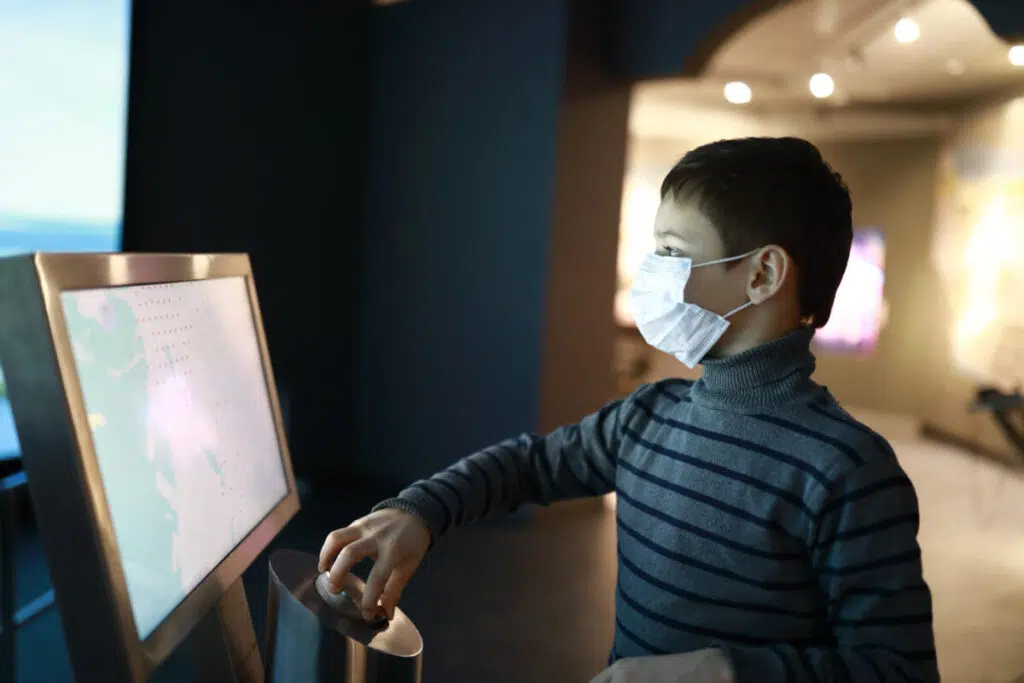
26. Fish Hatchery
If you live near a fish hatchery, this would be a really interesting field trip for middle schoolers. It does smell weird, but kids will love seeing the process that they go through in the hatchery. They will get to see a couple of different kinds of fish, and this field trip also gives the added benefit of some outdoor time.
27. Aviation Museum
An aviation museum is another excellent idea for a field trip for middle schoolers. Even if some students are not obsessed with planes and vehicles, the things that one can see at an aviation museum are undeniably fascinating.
Students will get to see several different types of planes, learn about famous pilots and wars, maybe see a rocket, and learn how aviation has changed since it first came into practice.
28. Local Power Plant, Dam, or Locks
This is another information-filled field trip. Though many dams and locks may not have tours, they usually have plenty of signs with blurbs to read that will provide for a lovely, self-guided tour. A lot of power plants will offer tours, though. In these places, middle schoolers will learn so much about modern technology, how things are powered, and more.
29. A Walking Tour of Your Town or City
Obviously, if you live in a big city, this may not be the safest idea, but if you feel you can conduct a safe walking tour of your town or city, do it! Even if they have lived in the town or city for a long time, many middle schoolers may still learn something about the town, and they may find something new to do. Pick a few destinations beforehand so that you can show your students the best-kept secrets of your city.
Remember that these ideas only scratch the surface of possibilities for fun field trips for middle schoolers. Students will appreciate any effort to add variety to their learning, so get creative!
30. Farmers Market
The Farmer’s Market is a great way for students to become involved in the community. Beforehand you can teach them about farming and how important it is to support your local farmers. Then you can take them to the market and let them pick something out or learn about all of the different produce. There are also sometimes animals there that they can pet.
Many communities host Farmer’s markets on Saturdays, so you might need to find out if your local farmer’s market takes place during the week!
31. Animal Shelter
The Animal Shelter is an awesome field trip not only for the kids but for the dogs and cats as well. The animals in animal shelters have often been neglected and abused. All they want is some love, which the kids will gladly give. It may inspire some families to adopt and give the animals a loving home.
32. Recycling Center
Learning about recycling is important. Visiting a Recycling Center might not be the most entertaining for the kids, but they will learn a valuable lesson about the importance of recycling and why we do it. They will also learn how to recycle and what can be reused, from plastic to paper to clothes.
33. A Hospital, Clinic, Dentist’s Office, etc
It is always a great idea to take the children to certain places where they can learn about different professions and what they could be when they grow up. Some kids may be scared of the hospital or doctor, but this way they can learn that doctors and nurses are here to help them.
If you can’t get the hospital to offer a tour, consider a tour of just any local clinic of a medical professional. Perhaps even a parent of a student in the class could offer a tour so that kids can learn about different professions.
Going to the bank may not sound the most fun to elementary school students, but they can learn important information that isn’t being fully taught in schools. Kids can go behind the scenes and possibly get a tour of the vault as well as learn how to write a check and what the purpose of a credit card is.
35. News, TV, or Radio Station
These field trips are fascinating because you can see the behind-the-scenes of the studio that the online viewers or listeners don’t get to see. The children will love to see the cameras and recording equipment, maybe even meet the people that their parents watch on TV every morning. Some kids could decide that this is the career path they want to move towards. The world always needs people to tell stories and report on what’s happening.
36. Local Business
It’s always important to highlight and remember local businesses. Local business owners would love to give back to the community by giving a tour to the students, inspiring them to chase their dreams. You never know which field trip is going to spark interest and help a kid decide what they want to be someday.
37. Restaurant or Bakery
Going to a restaurant or local bakery is something that children will love because they can get a behind-the-scenes tour, as well as some sampling of the food or treats. It will probably end up being one of their favorites since food is involved. Many local businesses will offer tours free of charge. ( Source )

38. Senior Care Facility
Taking the elementary school students to a retirement home is a great opportunity to teach them about the importance of service and learning from their elders. Children can oftentimes be egotistic because their brains aren’t fully developed. Volunteering is a great way to teach them compassion and kindness, and it will make the residents’ day as well.
39. Sporting Game
Sporting games are purely an entertaining field trip, and the students will be very excited. Most areas in the United States have a sports team, but even if you don’t live near a major city, you can find some minor league teams as well. Taking the students to a baseball or soccer game is probably the most common sport for a field trip. ( Source )
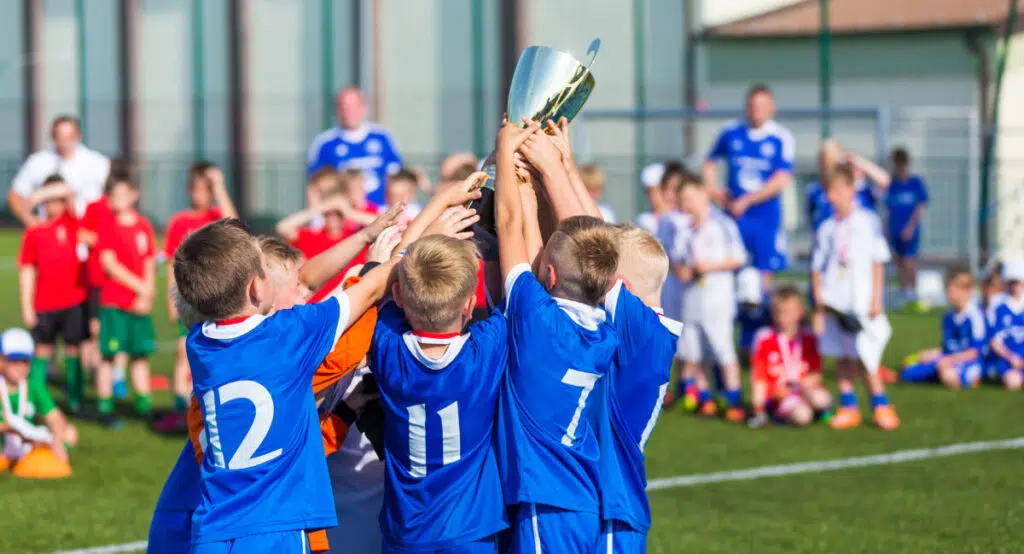
40. Theatre
Going to a theatre to see a play is also very exciting and entertaining. Communities almost always have a local theatre putting on a play for all ages to enjoy. You could even take the students to a play at the middle school or high school in the area. Make sure to pick an age-friendly play that they are willing to sit through for a few hours since young kids have a hard time sitting for long periods of time.
Going to the movies is a great indoor winter activity and very exciting for the children. It can get expensive, but there are also oftentimes group rate discounts, especially for schools. Maybe the movie field trip can be at the end of a big test as a reward. Don’t forget to get popcorn!
42. Orchestra
Going to the symphony or orchestra is a very special experience that not every child would normally experience. Classical music is very healthy for the brain. These days, everybody wants to listen to recorded music, but it’s important to instill a love of live music in the newer generations as well.
43. Pumpkin Patch
Fall is always a fun time of the year, and there are so many activities to do! This includes going to the pumpkin patch. Oftentimes, pumpkin patches not only have pumpkins to pick out and carve, but hayrides, mazes, and fun foods to try. My favorite pumpkin patch treats as a kid were apple cider donuts.
Picnics are easy and simple, probably costing zero dollars to the budget. All you have to do is make sure that every student brings a lunch from home and a blanket to sit on. Then all you have to do is take the class outside, set up the blankets, and they can sit with their friends and eat their lunch. Field Trips don’t always have to be big and extravagant.
45. Waterpark
The waterpark could be a great end-of-the-year activity since it needs to be warmer weather to go swimming. This field trip idea would probably need the most organizing, but it will be much worth it when it all comes together and you can celebrate the year together with students, parents, and teachers. This activity is recommended for older elementary school students that know how to swim.
There are endless opportunities for elementary school field trips! These young students are excited and curious about everything. Many of these places are free of charge and are happy to give a tour or experience to the students. Just make sure to plan everything out in advance and find enough chaperones to supervise the kids alongside the teachers. Good Luck! ( Source )
46. Explore a Local Recreation Center
Another great local resource that students can explore is a local recreation center. Finding and understanding available resources in the community is an important skill for kids as they transition to adulthood. A field trip to a recreation center can also emphasize the importance of health and lifelong physical activity to students as they begin to have more control over their lives.
47. Volunteer at a Food Pantry
Field trip education can be about more than just the sciences; giving high school students opportunities to serve in the community can be an important way for young adults to build character.
Many local food pantries would welcome the assistance of a large group of high school students. Taking a field trip day to volunteer at a local food pantry can help students understand more about supply chain management, while simultaneously helping them to build empathy.
48. Visit a Technology Company/Area
Technology is another area experiencing lots of growth. Helping to expose more students to areas like this can help give them direction when they may have none, and can also help fill a societal need.
If possible, arrange for students to take a field trip to a local software company where they can have opportunities to see the background processes of coding, system networks, and other tech phenomena. Showing students something like a server room, or cable management practices could be beneficial as well!
49. Visit the Capitol or Other Government Building
Whether it’s for History class, Political Science, or just to increase students’ social understanding, taking students to visit a capitol building or other government building can be both interesting and thought-provoking. This can be beneficial for all students as citizens, whether they are interested in pursuing education or careers in government or not.
50. Plan a College Visit
With students looking to the future, being able to get them on a university campus can be extremely helpful in guiding them in their decisions. Planning to visit a campus—or multiple campuses—could be a beneficial experience, especially for those on the fence about going.
Many colleges love to welcome high school students for campus visits and tours. Additionally, students may feel more comfortable being able to do a visit with friends and other peers with similar interests. Since Juniors will be thinking about which colleges to apply to, plan these trips preferably during students’ Junior year!
51. Plan a Photography Trip
With the invention of smartphones, and the popularity of Instagram, all students like to be both the photographer and the model. You can provide a field trip for them by taking them somewhere unique to take pictures and teaching them about principles of good photography, like lighting, balance, and the rule of thirds!
Alternatively, you could take them to a studio and allow them to take portraits or shoot other professional pieces, such as jewelry.
52. Plan a Painting Trip
For your more artsy individuals, you could consider planning a day trip to somewhere scenic where they could practice their painting skills. They could practice landscapes, nature scenes, or even portraits in nature.
53. Plan a Geological Trip
Another trip that could be fun is a trip to a location of geological significance. This could be something visual, such as being able to identify different strata on the side of a mountain, or something more tactile, like digging in an area for pieces of archeological or historical significance. It could even be something as simple as comparing rocks and their features depending on the area in which they’re found.
54. Do a Service Project Using Just Serve
We mentioned service in some of the above ideas (food pantry or homeless shelter), but you could also consider planning your own service project! Whether that’s planting trees locally, visiting an old folks’ home to visit with the residents there, or picking up trash.
There’s actually a great free website called Just Serve that allows you to quickly find service project needs for local non-profits. You could probably find something easy.
Allowing students to plan and prepare their own service activity can get them more engaged and help them feel like they can make a difference themselves.
55. Visit an Escape Room — or Any Activity Just for Fun!
Finally, we’d encourage you to be okay with some field trips being just for fun. Let your students go to an escape room, an amusement park, or a pool just for fun. Students need a break sometimes too!

- The Journal
- Vol. 14, No. 1
The Educational Value of Field Trips
Jay P. Greene
Brian Kisida
Daniel H. Bowen
Jay P. Greene joined EdNext Editor-in-chief Marty West to discuss the benefits of field trips, including how seeing live theater is a more enriching experience to students, on the EdNext podcast .

Crystal Bridges; Crystal Bridges Museum of American Art; School Tour © 2013 Stephen Ironside/Ironside Photography Bo Bartlett – “The Box” – 2002 • Oil on Linen • 82 x 100 – Photographer is Karen Mauch
The school field trip has a long history in American public education. For decades, students have piled into yellow buses to visit a variety of cultural institutions, including art, natural history, and science museums, as well as theaters, zoos, and historical sites. Schools gladly endured the expense and disruption of providing field trips because they saw these experiences as central to their educational mission: schools exist not only to provide economically useful skills in numeracy and literacy, but also to produce civilized young men and women who would appreciate the arts and culture. More-advantaged families may take their children to these cultural institutions outside of school hours, but less-advantaged students are less likely to have these experiences if schools do not provide them. With field trips, public schools viewed themselves as the great equalizer in terms of access to our cultural heritage.
Today, culturally enriching field trips are in decline. Museums across the country report a steep drop in school tours. For example, the Field Museum in Chicago at one time welcomed more than 300,000 students every year. Recently the number is below 200,000. Between 2002 and 2007, Cincinnati arts organizations saw a 30 percent decrease in student attendance. A survey by the American Association of School Administrators found that more than half of schools eliminated planned field trips in 2010–11.
The decision to reduce culturally enriching field trips reflects a variety of factors. Financial pressures force schools to make difficult decisions about how to allocate scarce resources, and field trips are increasingly seen as an unnecessary frill. Greater focus on raising student performance on math and reading standardized tests may also lead schools to cut field trips. Some schools believe that student time would be better spent in the classroom preparing for the exams. When schools do organize field trips, they are increasingly choosing to take students on trips to reward them for working hard to improve their test scores rather than to provide cultural enrichment. Schools take students to amusement parks, sporting events, and movie theaters instead of to museums and historical sites. This shift from “enrichment” to “reward” field trips is reflected in a generational change among teachers about the purposes of these outings. In a 2012‒13 survey we conducted of nearly 500 Arkansas teachers, those who had been teaching for at least 15 years were significantly more likely to believe that the primary purpose of a field trip is to provide a learning opportunity, while more junior teachers were more likely to see the primary purpose as “enjoyment.”
If schools are de-emphasizing culturally enriching field trips, has anything been lost as a result? Surprisingly, we have relatively little rigorous evidence about how field trips affect students. The research presented here is the first large-scale randomized-control trial designed to measure what students learn from school tours of an art museum.
We find that students learn quite a lot. In particular, enriching field trips contribute to the development of students into civilized young men and women who possess more knowledge about art, have stronger critical-thinking skills, exhibit increased historical empathy, display higher levels of tolerance, and have a greater taste for consuming art and culture.
Design of the Study and School Tours
The 2011 opening of the Crystal Bridges Museum of American Art in Northwest Arkansas created the opportunity for this study. Crystal Bridges is the first major art museum to be built in the United States in the last four decades, with more than 50,000 square feet of gallery space and an endowment in excess of $800 million. Portions of the museum’s endowment are devoted to covering all of the expenses associated with school tours. Crystal Bridges reimburses schools for the cost of buses, provides free admission and lunch, and even pays for the cost of substitute teachers to cover for teachers who accompany students on the tour.
Because the tour is completely free to schools, and because Crystal Bridges was built in an area that never previously had an art museum, there was high demand for school tours. Not all school groups could be accommodated right away. So our research team worked with the staff at Crystal Bridges to assign spots for school tours by lottery. During the first two semesters of the school tour program, the museum received 525 applications from school groups representing 38,347 students in kindergarten through grade 12. We created matched pairs among the applicant groups based on similarity in grade level and other demographic factors. An ideal and common matched pair would be adjacent grades in the same school. We then randomly ordered the matched pairs to determine scheduling prioritization. Within each pair, we randomly assigned which applicant would be in the treatment group and receive a tour that semester and which would be in the control group and have its tour deferred.
We administered surveys to 10,912 students and 489 teachers at 123 different schools three weeks, on average, after the treatment group received its tour. The student surveys included multiple items assessing knowledge about art as well as measures of critical thinking, historical empathy, tolerance, and sustained interest in visiting art museums. Some groups were surveyed as late as eight weeks after the tour, but it was not possible to collect data after longer periods because each control group was guaranteed a tour during the following semester as a reward for its cooperation. There is no indication that the results reported below faded for groups surveyed after longer periods.
We also assessed students’ critical-thinking skills by asking them to write a short essay in response to a painting that they had not previously seen. Finally, we collected a behavioral measure of interest in art consumption by providing all students with a coded coupon good for free family admission to a special exhibit at the museum to see whether the field trip increased the likelihood of students making future visits.
All results reported below are derived from regression models that control for student grade level and gender and make comparisons within each matched pair, while taking into account the fact that students in the matched pair of applicant groups are likely to be similar in ways that we are unable to observe. Standard validity tests confirmed that the survey items employed to generate the various scales used as outcomes measured the same underlying constructs.
The intervention we studied is a modest one. Students received a one-hour tour of the museum in which they typically viewed and discussed five paintings. Some students were free to roam the museum following their formal tour, but the entire experience usually involved less than half a day. Instructional materials were sent to teachers who went on a tour, but our survey of teachers suggests that these materials received relatively little attention, on average no more than an hour of total class time. The discussion of each painting during the tour was largely student-directed, with the museum educators facilitating the discourse and providing commentary beyond the names of the work and the artist and a brief description only when students requested it. This format is now the norm in school tours of art museums. The aversion to having museum educators provide information about works of art is motivated in part by progressive education theories and by a conviction among many in museum education that students retain very little factual information from their tours.
Recalling Tour Details. Our research suggests that students actually retain a great deal of factual information from their tours. Students who received a tour of the museum were able to recall details about the paintings they had seen at very high rates. For example, 88 percent of the students who saw the Eastman Johnson painting At the Camp—Spinning Yarns and Whittling knew when surveyed weeks later that the painting depicts abolitionists making maple syrup to undermine the sugar industry, which relied on slave labor. Similarly, 82 percent of those who saw Norman Rockwell’s Rosie the Riveter could recall that the painting emphasizes the importance of women entering the workforce during World War II. Among students who saw Thomas Hart Benton’s Ploughing It Under , 79 percent recollected that it is a depiction of a farmer destroying his crops as part of a Depression-era price support program. And 70 percent of the students who saw Romare Bearden’s Sacrifice could remember that it is part of the Harlem Renaissance art movement. Since there was no guarantee that these facts would be raised in student-directed discussions, and because students had no particular reason for remembering these details (there was no test or grade associated with the tours), it is impressive that they could recall historical and sociological information at such high rates.
These results suggest that art could be an important tool for effectively conveying traditional academic content, but this analysis cannot prove it. The control-group performance was hardly better than chance in identifying factual information about these paintings, but they never had the opportunity to learn the material. The high rate of recall of factual information by students who toured the museum demonstrates that the tours made an impression. The students could remember important details about what they saw and discussed.
Critical Thinking. Beyond recalling the details of their tour, did a visit to an art museum have a significant effect on students? Our study demonstrates that it did. For example, students randomly assigned to receive a school tour of Crystal Bridges later displayed demonstrably stronger ability to think critically about art than the control group.
During the first semester of the study, we showed all 3rd- through 12th-grade students a painting they had not previously seen, Bo Bartlett’s The Box . We then asked students to write short essays in response to two questions: What do you think is going on in this painting? And, what do you see that makes you think that? These are standard prompts used by museum educators to spark discussion during school tours.
We stripped the essays of all identifying information and had two coders rate the compositions using a seven-item rubric for measuring critical thinking that was developed by researchers at the Isabella Stewart Gardner Museum in Boston. The measure is based on the number of instances that students engaged in the following in their essays: observing, interpreting, evaluating, associating, problem finding, comparing, and flexible thinking. Our measure of critical thinking is the sum of the counts of these seven items. In total, our research team blindly scored 3,811 essays. For 750 of those essays, two researchers scored them independently. The scores they assigned to the same essay were very similar, demonstrating that we were able to measure critical thinking about art with a high degree of inter-coder reliability.
We express the impact of a school tour of Crystal Bridges on critical-thinking skills in terms of standard-deviation effect sizes. Overall, we find that students assigned by lottery to a tour of the museum improve their ability to think critically about art by 9 percent of a standard deviation relative to the control group. The benefit for disadvantaged groups is considerably larger (see Figure 1). Rural students, who live in towns with fewer than 10,000 people, experience an increase in critical-thinking skills of nearly one-third of a standard deviation. Students from high-poverty schools (those where more than 50 percent of students receive free or reduced-price lunches) experience an 18 percent effect-size improvement in critical thinking about art, as do minority students.

A large amount of the gain in critical-thinking skills stems from an increase in the number of observations that students made in their essays. Students who went on a tour became more observant, noticing and describing more details in an image. Being observant and paying attention to detail is an important and highly useful skill that students learn when they study and discuss works of art. Additional research is required to determine if the gains in critical thinking when analyzing a work of art would transfer into improved critical thinking about other, non-art-related subjects.
Historical Empathy. Tours of art museums also affect students’ values. Visiting an art museum exposes students to a diversity of ideas, peoples, places, and time periods. That broadening experience imparts greater appreciation and understanding. We see the effects in significantly higher historical empathy and tolerance measures among students randomly assigned to a school tour of Crystal Bridges.
Historical empathy is the ability to understand and appreciate what life was like for people who lived in a different time and place. This is a central purpose of teaching history, as it provides students with a clearer perspective about their own time and place. To measure historical empathy, we included three statements on the survey with which students could express their level of agreement or disagreement: 1) I have a good understanding of how early Americans thought and felt; 2) I can imagine what life was like for people 100 years ago; and 3) When looking at a painting that shows people, I try to imagine what those people are thinking. We combined these items into a scale measuring historical empathy.
Students who went on a tour of Crystal Bridges experience a 6 percent of a standard deviation increase in historical empathy. Among rural students, the benefit is much larger, a 15 percent of a standard deviation gain. We can illustrate this benefit by focusing on one of the items in the historical empathy scale. When asked to agree or disagree with the statement, “I have a good understanding of how early Americans thought and felt,” 70 percent of the treatment-group students express agreement compared to 66 percent of the control group. Among rural participants, 69 percent of the treatment-group students agree with this statement compared to 62 percent of the control group. The fact that Crystal Bridges features art from different periods in American history may have helped produce these gains in historical empathy.
Tolerance. To measure tolerance we included four statements on the survey to which students could express their level of agreement or disagreement: 1) People who disagree with my point of view bother me; 2) Artists whose work is critical of America should not be allowed to have their work shown in art museums; 3) I appreciate hearing views different from my own; and 4) I think people can have different opinions about the same thing. We combined these items into a scale measuring the general effect of the tour on tolerance.
Overall, receiving a school tour of an art museum increases student tolerance by 7 percent of a standard deviation. As with critical thinking, the benefits are much larger for students in disadvantaged groups. Rural students who visited Crystal Bridges experience a 13 percent of a standard deviation improvement in tolerance. For students at high-poverty schools, the benefit is 9 percent of a standard deviation.
The improvement in tolerance for students who went on a tour of Crystal Bridges can be illustrated by the responses to one of the items within the tolerance scale. When asked about the statement, “Artists whose work is critical of America should not be allowed to have their work shown in art museums,” 35 percent of the control-group students express agreement. But for students randomly assigned to receive a school tour of the art museum, only 32 percent agree with censoring art critical of America. Among rural students, 34 percent of the control group would censor art compared to 30 percent for the treatment group. In high-poverty schools, 37 percent of the control-group students would censor compared to 32 percent of the treatment-group students. These differences are not huge, but neither is the intervention. These changes represent the realistic improvement in tolerance that results from a half-day experience at an art museum.
Interest in Art Museums. Perhaps the most important outcome of a school tour is whether it cultivates an interest among students in returning to cultural institutions in the future. If visiting a museum helps improve critical thinking, historical empathy, tolerance, and other outcomes not measured in this study, then those benefits would compound for students if they were more likely to frequent similar cultural institutions throughout their life. The direct effects of a single visit are necessarily modest and may not persist, but if school tours help students become regular museum visitors, they may enjoy a lifetime of enhanced critical thinking, tolerance, and historical empathy.
We measured how school tours of Crystal Bridges develop in students an interest in visiting art museums in two ways: with survey items and a behavioral measure. We included a series of items in the survey designed to gauge student interest:
• I plan to visit art museums when I am an adult.
• I would tell my friends they should visit an art museum.
• Trips to art museums are interesting.
• Trips to art museums are fun.
• Would your friend like to go to an art museum on a field trip?
• Would you like more museums in your community?
• How interested are you in visiting art museums?
• If your friends or family wanted to go to an art museum, how interested would you be in going?
Interest in visiting art museums among students who toured the museum is 8 percent of a standard deviation higher than that in the randomized control group. Among rural students, the increase is much larger: 22 percent of a standard deviation. Students at high-poverty schools score 11 percent of a standard deviation higher on the cultural consumer scale if they were randomly assigned to tour the museum. And minority students gain 10 percent of a standard deviation in their desire to be art consumers.
One of the eight items in the art consumer scale asked students to express the extent to which they agreed or disagreed with the statement, “I would tell my friends they should visit an art museum.” For all students who received a tour, 70 percent agree with this statement, compared to 66 percent in the control group. Among rural participants, 73 percent of the treatment-group students agree versus 63 percent of the control group. In high-poverty schools, 74 percent would recommend art museums to their friends compared to 68 percent of the control group. And among minority students, 72 percent of those who received a tour would tell their friends to visit an art museum, relative to 67 percent of the control group. Students, particularly those from disadvantaged backgrounds, are more likely to have positive feelings about visiting museums if they receive a school tour.
We also measured whether students are more likely to visit Crystal Bridges in the future if they received a school tour. All students who participated in the study during the first semester, including those who did not receive a tour, were provided with a coupon that gave them and their families free entry to a special exhibit at Crystal Bridges. The coupons were coded so that we could determine the applicant group to which students belonged. Students had as long as six months after receipt of the coupon to use it.
We collected all redeemed coupons and were able to calculate how many adults and youths were admitted. Though students in the treatment group received 49 percent of all coupons that were distributed, 58 percent of the people admitted to the special exhibit with those coupons came from the treatment group. In other words, the families of students who received a tour were 18 percent more likely to return to the museum than we would expect if their rate of coupon use was the same as their share of distributed coupons.
This is particularly impressive given that the treatment-group students had recently visited the museum. Their desire to visit a museum might have been satiated, while the control group might have been curious to visit Crystal Bridges for the first time. Despite having recently been to the museum, students who received a school tour came back at higher rates. Receiving a school tour cultivates a taste for visiting art museums, and perhaps for sharing the experience with others.
Disadvantaged Students
One consistent pattern in our results is that the benefits of a school tour are generally much larger for students from less-advantaged backgrounds. Students from rural areas and high-poverty schools, as well as minority students, typically show gains that are two to three times larger than those of the total sample. Disadvantaged students assigned by lottery to receive a school tour of an art museum make exceptionally large gains in critical thinking, historical empathy, tolerance, and becoming art consumers.
It appears that the less prior exposure to culturally enriching experiences students have, the larger the benefit of receiving a school tour of a museum. We have some direct measures to support this explanation. To isolate the effect of the first time visiting the museum, we truncated our sample to include only control-group students who had never visited Crystal Bridges and treatment-group students who had visited for the first time during their tour. The effect for this first visit is roughly twice as large as that for the overall sample, just as it is for disadvantaged students.
In addition, we administered a different version of our survey to students in kindergarten through 2nd grade. Very young students are less likely to have had previous exposure to culturally enriching experiences. Very young students make exceptionally large improvements in the observed outcomes, just like disadvantaged students and first-time visitors.
When we examine effects for subgroups of advantaged students, we typically find much smaller or null effects. Students from large towns and low-poverty schools experience few significant gains from their school tour of an art museum. If schools do not provide culturally enriching experiences for these students, their families are likely to have the inclination and ability to provide those experiences on their own. But the families of disadvantaged students are less likely to substitute their own efforts when schools do not offer culturally enriching experiences. Disadvantaged students need their schools to take them on enriching field trips if they are likely to have these experiences at all.
Policy Implications
School field trips to cultural institutions have notable benefits. Students randomly assigned to receive a school tour of an art museum experience improvements in their knowledge of and ability to think critically about art, display stronger historical empathy, develop higher tolerance, and are more likely to visit such cultural institutions as art museums in the future. If schools cut field trips or switch to “reward” trips that visit less-enriching destinations, then these important educational opportunities are lost. It is particularly important that schools serving disadvantaged students provide culturally enriching field trip experiences.
This first-ever, large-scale, random-assignment experiment of the effects of school tours of an art museum should help inform the thinking of school administrators, educators, policymakers, and philanthropists. Policymakers should consider these results when deciding whether schools have sufficient resources and appropriate policy guidance to take their students on tours of cultural institutions. School administrators should give thought to these results when deciding whether to use their resources and time for these tours. And philanthropists should weigh these results when deciding whether to build and maintain these cultural institutions with quality educational programs. We don’t just want our children to acquire work skills from their education; we also want them to develop into civilized people who appreciate the breadth of human accomplishments. The school field trip is an important tool for meeting this goal.
Jay P. Greene is professor of education reform at the University of Arkansas, where Brian Kisida is a senior research associate and Daniel H. Bowen is a doctoral student.
Additional materials, including a supplemental study and a methodological appendix , are available.
For more, please see “ The Top 20 Education Next Articles of 2023 .”
This article appeared in the Winter 2014 issue of Education Next . Suggested citation format:
Greene, J.P., Kisida, B., and Bowen, D.H. (2014). The Educational Value of Field Trips: Taking students to an art museum improves critical thinking skills, and more . Education Next , 14(1), 78-86.
Last Updated
License this Content
Latest Issue
Spring 2024.
Vol. 24, No. 2
We Recommend You Read
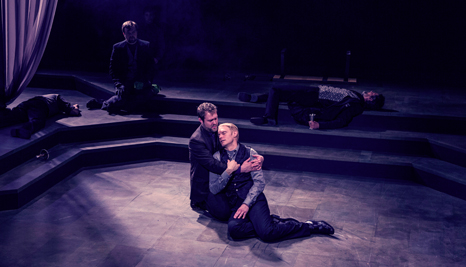
Learning from Live Theater
Students realize gains in knowledge, tolerance, and more
by Jay P. Greene
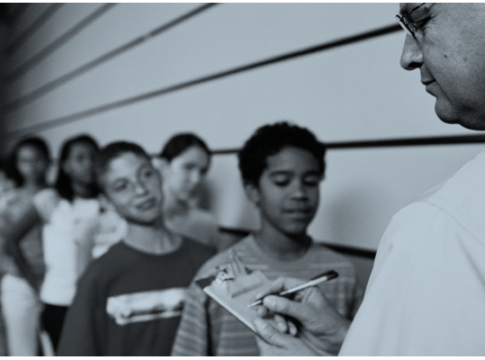
Getting Ahead by Staying Behind
An evaluation of Florida’s program to end social promotion
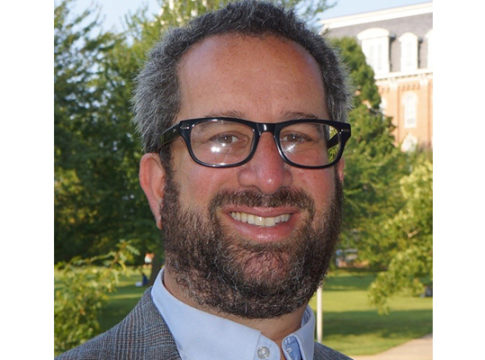
Straight Up Conversation: Scholar Jay Greene on the Importance of Field Trips
by Frederick Hess
The 10 Benefits of School Field Trips: Why it’s Crucial to Learn Outside the Classroom

Everyone (read: students) knows the best part about school is the field trips. Students get to get out of the classroom and into the real world, even if just for a few hours. These trips, no matter where they are, are formative for children . Whether it’s learning how to shuck corn on the grounds of a historical park, studying the tribal gear in an African art exhibit, or understanding how gravity works at the science museum , these hands-on learning experiences give children the ability to do things that can’t always fit inside the four walls of a classroom .
In this article, we’re going to share with you the 10 benefits of school field trips and why it’s crucial for children to learn outside the classroom.
The 10 Benefits of School Field Trips
Students do better in school.
Leaving school actually makes students do better when they get back to school. We’re not talking about suspensions or weekends or holidays or vacations. We’re talking about field trips .
Regardless of gender, ethnicity or socioeconomic status, students who go on field trips have better grades, higher graduation rates from high school and college, and greater income [1]. In fact, in a study conducted by the NEA, 89% of adults said educational trips had a positive, lasting impact on their education and career because the trips made them more engaged, intellectually curious and interested in and out of school.
Students learn more social skills
By getting out of the classroom and into a new place that encourages learning in a different aspect, students have the opportunity to do more than learn. They have the chance to talk to new people. These social skills they acquire help them learn things that they can’t in textbooks or in workbooks.

Students can visit new places
Not everyone has the financial means to visit museums and art galleries and historical landmarks. So these field trips give children the opportunities to see places they may not regularly visit.
Field trips exist not just to provide economically useful skills in numeracy and literacy, but also to introduce people to arts and culture. More-advantaged families may take their children to these cultural institutions outside of school hours, but less-advantaged students are less likely to have these experiences if these trips do not provide them.
With field trips, public schools viewed themselves as the great equalizer in terms of access to our cultural heritage [2].
Students can become critical thinkers
Field trips are more than going to a new place and getting out of school for the day. Everywhere you go can turn into a learning experience.
Students who go on field trips are known to have become more observant, noticing and describing more details in image or exhibit [3]. Being observant and paying attention to detail is an important and highly useful skill that students learn when they study and discuss what they see on field trips.
Students learn by experiencing, not just by studying “theory”
When students leave the classroom, they see the connections between what is happening at school and in the “real world.” They begin to see that what they learn within the walls of the classroom can help them solve the problems they see in the world around them, and can have a direct impact on who they become as adults [3].
Students learn more time management skills
A lot goes into a field trip, and while teachers, chaperones, and workers are the ones in charge, it’s also up to students to figure out what exhibits they want to learn about, how much time they need to eat, and when they can manage to visit the gift shop at the end of the trip.
Field trips give students perhaps their first feel of independence, even if dozens of adults are watching over them.
Students get to learn by doing
Think of the science museums and historical parks around your area. The classes they offer and the exhibits they show. The things students can learn that they wouldn’t otherwise get to inside a classroom. That’s because not all students can get the full education they need when they learn from textbooks and reading and application.
Each person has a different way of accumulating knowledge. While some prefer listening to learn better, others need to write or they only need to read the text or see a picture to later remember. The learning styles can be classified in visual, auditory and kinesthetic [3]. The distribution of the three learning styles is 65% visual, 30% auditory and 5% kinesthetic.
Field trips give these more unique learners a chance to, well, learn.
Students learn more teamwork skills
While on field trips, students typically get the chance to work together to solve simulated problems associated with the place of the field trip. Differing from group projects in school, these “real world” simulations allow children to put their teamwork skills and critical thinking skills to good use.
Students develop a stronger connection to the community
Communities are often rooted in a rich sense of history. By getting out of the classroom and into the streets, students can learn that there’s more out there than their little insular bubbles. School can bog students down, so it’s important to remind them how much is out there, even in our own community.
Students learn more leadership skills
Learning about people and places on field trips give students a chance to step out of their comfort zone. It gives children the chance to step up when they’re out in public. A leadership opportunity as simple as making a child the student leader in a group gives students the chance to test themselves and build relationships with those around them.
Buying Guide
Remember the trip you went on by bringing a Polaroid camera from Unique Photo .
This camera will need immediately printable film from Retrospekt .
If you have a cell phone and it’s allowed on the field trip, don’t let it die while you’re out. Purchase the ZAGG portable charger case. And don’t forget to charge the case before the trip.
No matter where you go on a field trip, chances are you’ll be taking a drive to get there. Stay hydrated with a vibey crystal water bottle from Vorda .
Pack all of your belongings in a Fjallraven backpack.
External references
Field Trips: Pros and Cons
Off-campus excursions can enhance learning, but they pose challenges
- Tips & Strategies
- An Introduction to Teaching
- Policies & Discipline
- Community Involvement
- School Administration
- Technology in the Classroom
- Teaching Adult Learners
- Issues In Education
- Teaching Resources
- Becoming A Teacher
- Assessments & Tests
- Elementary Education
- Secondary Education
- Special Education
- Homeschooling
- M.Ed., Curriculum and Instruction, University of Florida
- B.A., History, University of Florida
Are field trips worth all the time and effort required to make them successful? Most teachers have asked themselves this question at one time or another, typically when feeling overwhelmed as they prepare for a field trip. The truth is that field trips at any grade level can cause quite a few headaches for teachers. At the same time, well-planned field trips can provide students with truly educational experiences they cannot get in the confines of the classroom. Following is a look at the pros and cons of field trips.
Benefits of Field Trips
Field trips provide students with new opportunities for learning through experience:
Different Learning Modalities
Information is presented to students in a way that meets different learning modalities. Field trips provide students with the ability to learn by doing instead of just passively listening to the information being taught in class.
Students are exposed to new experiences that, hopefully, broaden their horizons. This can be especially helpful for students from lower socioeconomic backgrounds who may not have been exposed to these opportunities before.
Reinforcing Concepts
Concepts that have already been learned in the classroom can be reinforced. Sometimes seeing information being taught in a new way can make a big difference in student comprehension. There is quite a difference between being taught about something like hurricanes and wind speed and experiencing them in an exhibit at a science museum.
Shared Reference
Students are provided with shared reference points that teachers can then refer to and use in future lessons. There may be an opportunity to have two or more disciplines use a field trip as an enrichment activity. For example, a trip to an art museum (art) may couple with a timeline for social studies (political systems in place when art was created) or math (measurements) can combine with science in a biosystem (river, beach, and meadow). In this manner, several teachers can then refer to things that students saw and experienced during the field trip for the remainder of the school year.
Increased Student-Teacher Communication
Students and teachers can see each other in a different light, helping to increase communication between them. Some students who might be overlooked in class because they are quiet might really come alive on field trips.
If parents are involved as chaperones, they can feel more connected to the teacher and the lessons being taught. They can get to know the teacher better and understand what teachers deal with daily.
Meeting Standards
Standards in social studies and science require students to have experiences related to concepts in the discipline. In social studies, students are required to take informed action. In science, students need to be exposed to a series of concepts to help them to better understand the world around them. Field trips help teachers meet these objectives.
Problems With Field Trips
Teachers face a number of concerns and challenges when designing field trips that they need to recognize and address before planning a field trip.
Preparation Needed
Field trips take preparation if teachers want to make them meaningful. They have to coordinate locations and transportation. They also need to create an effective lesson plan that they will follow when on the excursion.
Students will be out of the school building for a field trip, which means they will miss other classes—at least in middle and high school. If each core subject area (ELA, math science, or social studies) offers one field trip during a school year, students would be out of the building for four days. School attendance policies may count these as excused absences, but any field trip that removes students from class reduces the number of classroom hours.
Trips Can Be Costly
Field trips can be expensive, and some students may not have the funds to attend. Organizers of the field trip may consider asking for parents to add a few dollars to help students in need. School boosters may need to host a fundraiser for students to raise money for more expensive trips.
Teachers have to organize the collection of money and the assigning of chaperones. Teachers need to spend some time creating student groups that work for all students and ensuring that chaperones are assigned accordingly.
Teachers will likely have to deal with red tape as they plan field trips including permission slips, medical information, and emergency procedures. Schools typically require paperwork from teachers and their students.
Potential Discipline Problems
Students will be placed in a larger environment than the classroom. New surroundings could possibly lead to additional discipline problems. Because teachers typically only lead a small group (such as 30 to 40 students), they may not be able to maintain control over the behavior of every student on the field trip, especially if the group is large. Teachers should go over rules and expectations before the field trip, enforce the rules strictly while away from school grounds, and create effective consequences for misbehavior.
May Be Disappointing
The field trip destination might not live up to the teacher's expectations. The location might not be as interesting as the teacher thought it would be. The time to complete the field trip might be considerably less than was expected. Therefore, it is a good idea to have some contingency plan in mind just in case.
There may be students who, for one reason or another, will not attend the field trip. Teachers must leave lessons, usually enrichment offerings, that mirror some of the concepts being experienced on the field trip.
Requesting Feedback
One of the best ways to measure the success of a field trip (other than returning all students back to the school) is to ask for feedback. Teachers can post a survey for participants and for other chaperones asking them to express how they would evaluate the trip.
Opportunity to Reflect
Students should have the opportunity to reflect on the trip and write a response in a journal or essay. Requiring journal responses after the trip can solidify the information learned as students reflect on their new experiences. Asking students to write a thank you to the school principal for allowing the trip may even smooth the path to additional field trips.
Worth the Difficulties
Many teachers feel that well-chosen field trip destinations are worth the difficulties they may create. The key is taking the time to plan each aspect as much as possible. Teachers should be proactive when thinking about and planning field trips. Students, on the other hand, may remember the experience of the school field trip as a highlight of the school year, and the time they learned more than anything taught in class.
- How to Have a Safe, Fun, and Successful Field Trip
- Pros and Cons of Teaching
- The Pros and Cons of Block Schedules
- What Are Some Pros and Cons of the Common Core State Standards?
- Parents Guide to the Pros and Cons of Homeschooling
- Pros and Cons to Flexible Grouping in Middle and High School
- Whole Group Discussion Pros and Cons
- Job Sharing for Teachers
- 7 Back to School Tips for Teachers
- How to Avoid Common Mistakes When Writing Learning Objectives
- 11 Pros and Cons of Using Movies in Class
- How Scaffolding Instruction Can Improve Comprehension
- 10 Pros and Cons of Being a School Principal
- Methods for Presenting Subject Matter
- The Pros and Cons of Allowing Cell Phones in School
- 7 Ways to Take Control of Your Classroom to Reduce Student Misbehavior
The Enlightened Mindset
Exploring the World of Knowledge and Understanding
Welcome to the world's first fully AI generated website!
What is a Field Trip: Exploring the Benefits, Challenges, and Creative Ideas
By Happy Sharer
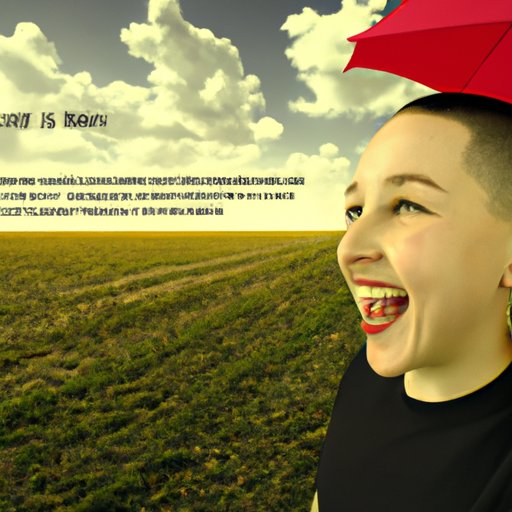
Introduction: What is a Field Trip?
A field trip is an educational excursion outside of the classroom environment. It is an opportunity for students to gain first-hand experience with the material they are learning in class. Field trips can take place at local attractions, museums, historic sites, nature centers, and more. They can also be conducted virtually, allowing students to explore faraway places without ever leaving the classroom.
Overview of Field Trips: Exploring the Benefits and Challenges
Field trips are an important part of any school curriculum. They provide an opportunity for students to gain real-world experience with the material they are learning in class. However, there are both benefits and challenges associated with field trips that must be considered before planning one.
Benefits of Field Trips
The most obvious benefit of field trips is that they give students the chance to experience the material they are learning in class in a real-world setting. According to a study conducted by the National Education Association, “Field trips provide students with experiences that cannot be replicated in the classroom. They offer opportunities to explore concepts from a different perspective, to observe firsthand what has been read about in textbooks, and to make connections between course content and real life.”
In addition to providing an opportunity for experiential learning, field trips can also help to engage student interest in the subject matter. A study conducted by the University of Texas found that students who went on field trips were more likely to remember the material they had learned than those who did not go on the trip. Furthermore, field trips can spark curiosity and inspire students to ask questions and seek out further knowledge.
Challenges of Field Trips
Despite their many benefits, field trips can present some challenges. One of the biggest challenges associated with field trips is the cost. Depending on where you are traveling and the size of your group, the expenses can quickly add up. Additionally, finding the time to plan and execute a successful field trip can be difficult for teachers who already have a full schedule.
Safety is another issue that must be taken into consideration when planning a field trip. It is important to ensure that all students are supervised at all times and that the destination is appropriate for the age and maturity level of the students.
Tips for Planning a Successful Field Trip
Planning a successful field trip requires careful consideration of multiple factors. Here are some tips to keep in mind when planning a field trip.
Establish Goals
Before planning a field trip, it is important to establish clear goals. Ask yourself why you are taking the students on the trip and what you hope to accomplish. This will help to ensure that the field trip is meaningful and relevant to the material being taught in class.
Choose an Appropriate Destination
Once you have established your goals, it is important to choose a destination that is appropriate for the age and maturity level of the students. When selecting a location, consider the interests and abilities of the students and make sure that the destination offers something that will be interesting and engaging for them.
Develop an Itinerary
Once you have selected a destination, it is important to develop an itinerary that outlines the activities for the day. Make sure there is enough time for each activity and that the activities are relevant to the goals you have established for the trip.
Manage Safety Issues
Safety should always be a top priority when planning a field trip. Make sure that all students are supervised at all times and that the destination is appropriate for the age and maturity level of the students. Additionally, be sure to review any safety policies or procedures with the students prior to the trip.
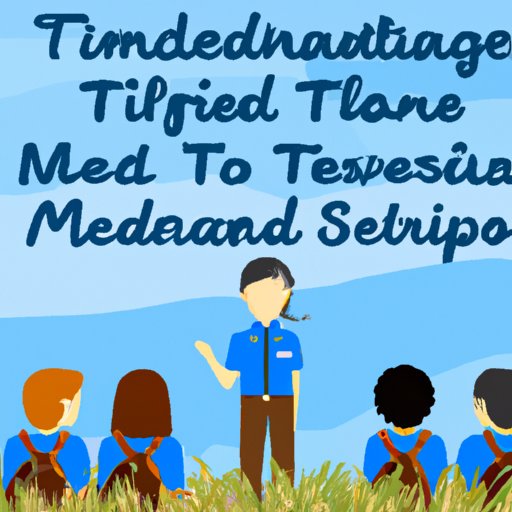
A Guide to Creating a Meaningful Field Trip Experience
Creating a meaningful field trip experience requires careful planning and preparation. Here are some tips to ensure that your students get the most out of their field trip.
Set Clear Expectations
Prior to the field trip, it is important to set clear expectations for the students. Explain to them the purpose of the trip and what you hope they will gain from the experience. Additionally, discuss any rules or guidelines that need to be followed during the trip.
Make Connections with Course Material
When planning the activities for the field trip, look for ways to connect the material to the course content. This will help to ensure that the students gain a deeper understanding of the material and that the trip is meaningful and relevant.
Utilize Time Wisely
Time management is key to ensuring a successful field trip. Make sure that all activities are planned in advance and that the students understand what is expected of them. Additionally, leave room for flexibility in case something unexpected arises.
How Field Trips Enhance Learning in the Classroom
Field trips can be an invaluable tool for enhancing learning in the classroom. Here are some of the ways that field trips can benefit students.
Engaging Student Interest
Field trips can help to engage student interest in the subject matter. Experiencing the material firsthand can make it easier for students to understand and relate to the material being taught in class.
Building Critical Thinking Skills
Field trips can also help to build critical thinking skills. Students are exposed to new information and must process it in order to gain a better understanding of the material. This helps to develop problem-solving abilities and encourages students to think more deeply about the material.
Developing Problem-Solving Abilities
Field trips can also help to develop problem-solving abilities. Students are exposed to new environments and must find ways to navigate them. This helps to build confidence and teaches students how to think on their feet.
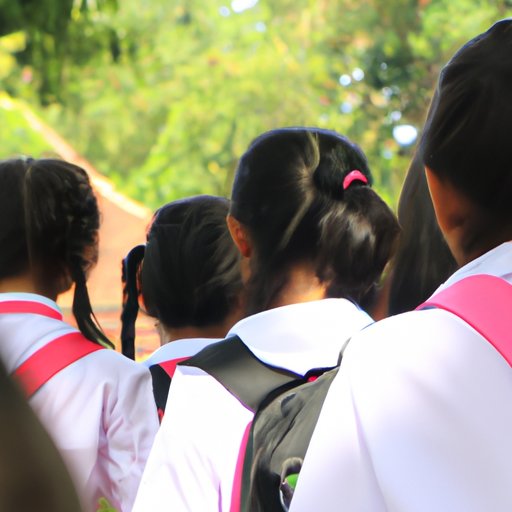
The Value of Field Trips for Students
Field trips can be a valuable learning experience for students. Here are some of the ways that field trips can benefit students.
Developing Self-Confidence
Field trips can help to boost self-confidence. Being in unfamiliar surroundings can be intimidating, but it can also be a great opportunity for students to practice problem-solving skills and develop self-confidence.
Strengthening Interpersonal Relationships
Field trips can also help to strengthen interpersonal relationships among students. Working together to navigate new environments and solve problems can help to foster teamwork and collaboration.
Acquiring New Knowledge and Experiences
Finally, field trips can open students up to new knowledge and experiences. Seeing things firsthand can help to bring the material to life and make it easier for students to understand and remember.
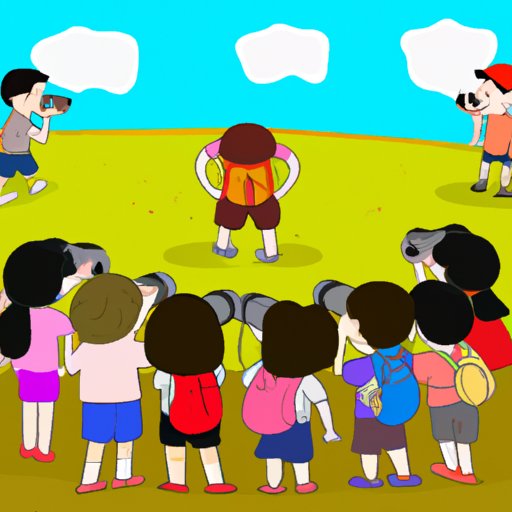
Creative Ideas for Field Trips
There are many creative ways to incorporate field trips into the classroom. Here are some ideas for fun and engaging field trips.
Museum Visits
Museums are a great way to introduce students to a variety of topics. From art and history to science and technology, there are a variety of museums that offer educational experiences for students of all ages.
Local Attractions
Local attractions can be a great way to introduce students to the community and its culture. Consider visiting historical sites, parks, zoos, or aquariums for an interactive and fun learning experience.
Nature Walks
Nature walks are a great way to get students outdoors and exploring their natural surroundings. Not only can this be a fun activity, but it can also be a great way to introduce students to concepts such as ecology and conservation.
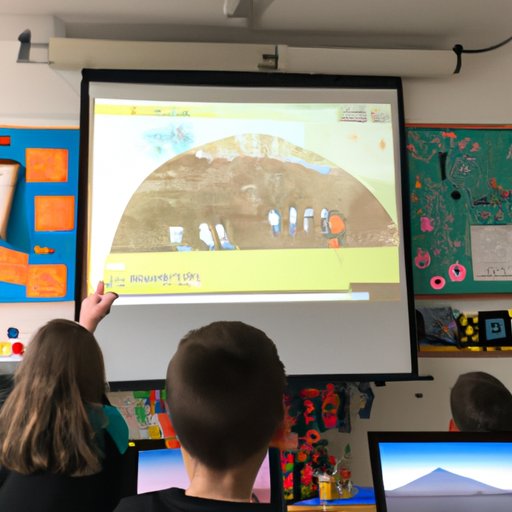
Virtual Field Trips: Taking Education Beyond the Classroom
Technology has opened up a world of possibilities for educators looking to take their students on field trips. Virtual field trips allow students to explore faraway places without ever leaving the classroom.
Advantages of Virtual Field Trips
Virtual field trips come with a number of advantages. They are often less expensive than traditional field trips, and they can be used to explore destinations that would otherwise be inaccessible. Additionally, virtual field trips can be tailored to fit the curriculum and the specific needs of the students.
Types of Virtual Field Trips
There are a variety of types of virtual field trips available. These include virtual tours of museums and historical sites, live video streams of events, and interactive simulations of different environments. Each type of virtual field trip offers a unique experience and can be used to enhance learning in the classroom.
Tips for Planning a Virtual Field Trip
When planning a virtual field trip, it is important to do your research. Check to see if the destination offers a virtual tour and make sure that the technology needed is available and easy to use. Additionally, make sure to set clear expectations and goals for the virtual field trip and to create an itinerary that outlines the activities for the day.
Field trips can be a valuable learning experience for students. They provide an opportunity for students to gain first-hand experience with the material they are learning in class and can help to engage student interest in the subject matter. Additionally, field trips can help to build critical thinking skills and develop problem-solving abilities. Finally, virtual field trips offer an exciting way to explore faraway places without ever leaving the classroom. With careful planning and preparation, field trips can be a fun and educational experience for everyone involved.
(Note: Is this article not meeting your expectations? Do you have knowledge or insights to share? Unlock new opportunities and expand your reach by joining our authors team. Click Registration to join us and share your expertise with our readers.)
Hi, I'm Happy Sharer and I love sharing interesting and useful knowledge with others. I have a passion for learning and enjoy explaining complex concepts in a simple way.
Related Post
Exploring japan: a comprehensive guide for your memorable journey, your ultimate guide to packing for a perfect trip to hawaii, the ultimate packing checklist: essentials for a week-long work trip, leave a reply cancel reply.
Your email address will not be published. Required fields are marked *
Expert Guide: Removing Gel Nail Polish at Home Safely
Trading crypto in bull and bear markets: a comprehensive examination of the differences, making croatia travel arrangements, make their day extra special: celebrate with a customized cake.
- Cambridge Dictionary +Plus
Meaning of field trip in English
Your browser doesn't support HTML5 audio
- break-journey
- circumnavigation
You can also find related words, phrases, and synonyms in the topics:
field trip | American Dictionary
Examples of field trip, translations of field trip.
Get a quick, free translation!

Word of the Day
under lock and key
locked away safely

Dead ringers and peas in pods (Talking about similarities, Part 2)

Learn more with +Plus
- Recent and Recommended {{#preferredDictionaries}} {{name}} {{/preferredDictionaries}}
- Definitions Clear explanations of natural written and spoken English English Learner’s Dictionary Essential British English Essential American English
- Grammar and thesaurus Usage explanations of natural written and spoken English Grammar Thesaurus
- Pronunciation British and American pronunciations with audio English Pronunciation
- English–Chinese (Simplified) Chinese (Simplified)–English
- English–Chinese (Traditional) Chinese (Traditional)–English
- English–Dutch Dutch–English
- English–French French–English
- English–German German–English
- English–Indonesian Indonesian–English
- English–Italian Italian–English
- English–Japanese Japanese–English
- English–Norwegian Norwegian–English
- English–Polish Polish–English
- English–Portuguese Portuguese–English
- English–Spanish Spanish–English
- English–Swedish Swedish–English
- Dictionary +Plus Word Lists
- English Noun
- American Noun
- Translations
- All translations
Add field trip to one of your lists below, or create a new one.
{{message}}
Something went wrong.
There was a problem sending your report.
Music Industry Moves: Benny Blanco to Be Honored With President’s Award at 2024 BMI Pop Awards
By Thania Garcia
Thania Garcia
- Britney Spears and Her Father Settle Dispute Over Alleged Financial Misconduct During Conservatorship 2 days ago
- Karol G and Feid Dominate at the 2024 Latin American Music Awards (Complete Winners List) 3 days ago
- Music Industry Moves: Benny Blanco to Be Honored With President’s Award at 2024 BMI Pop Awards 3 days ago

BMI is honoring songwriter, producer and artist Benny Blanco with the President’s Award at the organization’s 2024 Pop Awards .
As a songwriter, record producer and artist, Blanco has crafted hits like “Diamonds” by Rihanna, “Circus” by Britney Spears and “Moves Like Jagger” by Maroon 5 to name just a few. He’s collaborated with globally-lauded artists including Justin Bieber, Selena Gomez, SZA, Katy Perry, Ed Sheeran and the Weeknd, among others.
Popular on Variety
The BMI Pop Awards will also reveal winners for Pop Song of the Year, Songwriter of the Year, Publisher of the Year and BMI’s 50 most-performed pop songs in the U.S. of the previous year. The private event, hosted by BMI President and CEO Mike O’Neill and VP of Worldwide Creative Barbara Cane, will be held on June 4 at Beverly Wilshire in Beverly Hills, CA.
“Benny’s numerous contributions to the art of music and songwriting across all genres are unparalleled,” said Cane. “His artistry and dedication to his craft have profoundly inspired and influenced many in our creative communities and we are thrilled to be honoring him with the BMI President’s Award. We’re also looking forward to a fabulous night that will celebrate the top songwriters and publishers we are privileged to represent.”
+ Peter Shapiro is set to manage and program the next era of the Bearsville Theater in Woodstock, NY. Shapiro’s Dayglo Presents will oversee the revived theater with the Bearsville Theater team including a new General Manager Frank Bango and Talent Buyer Mike Campbell.
Built by Albert Grossman, manager of such legends as Bob Dylan, Peter, Paul and Mary, The Band, and Janis Joplin, and restored by owner Lizzie Vann, the Bearsville Theater was built in 1989 to compliment the Bearsville recording studios.
+ Reba McEntire will host the 59th Academy of Country Music Awards on May 16 at 8 p.m. EDT/7 p.m. CDT/5 p.m. PDT, streaming live on Prime Video from Ford Center at The Star in Frisco, Texas. She returns as host for the 17th time, the most of any artist.
“I am tickled to pieces to get to host the ACM Awards for the 17th time!” McEntire said. “What an honor to have been part of the past, present and now the future of the Academy of Country Music with Amazon Prime Video. I can’t wait to get to Texas and see everybody May 16th!”
April 23, Tuesday
Hip-hop producer BNYX (Yeat, Drake, Travis Scott, Lil Uzi Vert, Nicki Minaj) has signed a new deal with Zack Bia’s Field Trip Recordings and Capitol Records . Yeat’s Lyfestyle Corporation will also work with BNYX as part of the deal.
“BNYX is an exceptional musician, a true artist with a specific vision but above all an incredible human,” said Bia. “Yeat brought him into our lives and he’s turned into family. It is only right we would all partner to bring his music to the world as the first official signee to Lyfestyle Corporation / Field Trip / Capitol Records. We couldn’t be more honored and excited.”
The Philadelphia-bred artist is said to release his debut project in the coming months under this deal and off the success of a blockbuster 2023 when he spent seven weeks topping Billboard’s Top Rap Producers chart. He’s set to perform live for the first time at Jack Harlow’s Gazebo Festival in May and will be joining Yeat for a slate of shows later this summer.
“As a producer BNYX has had a profound impact on both music and culture,” said Tom March, chairman and CEO for Capitol Records. “We’re thrilled to partner with he, his manager Ness, the brilliant Zack Bia and Field Trip Recordings on the launch of BNYX’s solo career. It’s a privilege to enter this new era together continuing our longtime relationship with Zack and the Field Trip team.”
On the partnership, BNYX said: “I’d like to thank God, my manager, and Rick Owens.”
+ Samantha Sklar has been promoted to VP of A&R at Position Music .
Sklar’s most recent notable success is marked with the signing of breakout songwriter Jack LaFrantz, who co-wrote Benson Boone’s hit Hot 100-topping single “Beautiful Things.” Sklar joined Position Music in August 2022 and has been integral in helping to build out the frontline pop publishing roster including the additions of Joe Kearns, Zach Skelton, John “Feldy” Feldmann, Alex “Abomb” Fernandez, amongst others yet to be announced. Prior to joining Position, Sklar was an A&R at Warner Chappell Music Publishing, where she signed Stephen Kirk, who co-wrote BTS’ “Butter.”
Hunter is also the co-founder of Live Help Live, an independent label representing breakout acts like Jordan Ward. Meanwhile, Muniz has over 12 years of experience in talent branding and media relations. She has managed publicity campaigns for artists including Coco Jones, Alessia Cara, SZA, and the Prince Estate, among others.
+ Bella Figura Music , the independent music publisher and record label founded by Alexi Cory-Smith and Neelesh Prabhu in 2022, has announced the acquisition of RAK Publishing (RAK) .
RAK oversees 1500 copyrights, including classic hits such as “I Love Rock ‘n’ Roll” recorded by Joan Jett and the Blackhearts, “Kids in America” recorded by Kim Wilde, “Music” recorded by John Miles, and many others.
RAK was founded in 1969 by record producer Mickie Most and his wife Christina and now represents over a hundred writers including the Ivor Novello Winner Errol Brown and BASCA Gold Badge recipients Steve Harley and Suzi Quatro.
+ Reservoir Media, Inc. and Big Life Managemen t, a Reservoir company, have announced a slate of key promotions at Big Life. Kat Kennedy , Colin Roberts, and Claire Kilcourse have been promoted to partners, with Kennedy also taking on a new role as managing director.
In her 18 years at Big Life, Kennedy rose from a junior role to her previous title of general manager, which she held for 12 years. Roberts began at Big Life in 2007 as an A&R scout, bringing in artists including La Roux and the Sound of Arrows, with the latter becoming the first of many of his own management clients.
Kilcourse returned to Big Life as an artist manager in January 2017 following an earlier role as a management assistant between 2010 and 2012. On her return to the company, she brought Orla Gartland and Look Mum No Computer to the roster.
+ Portland-based indie record label Really Rad Records has launched an online fundraiser to help the company get back on its feet after its headquarters were burned down last month. Really Rad provides artists with PR, booking and advertising services as well as producing and distributing physical formats like vinyl, CDs, and cassettes.
Donations will go towards restocking merchandise, starting with the most recent arrivals and working backwards, in addition to any refunds that customers may place for the destroyed merchandise.
“The investigation is still ongoing, but it’s believed that an electrical fire sparked from an outlet in our living room and caught on some cardboard shipping supplies,” said the company on their GoFundMe page. “Between that and the thousands of vinyl records stocked on our shelves, it took less than 90 seconds for the fire to grow so hot that our home was filled with black smoke, windows were cracking and the staircase outside our apartment leading to our upstairs neighbor was completely engulfed in flames.”
+ Lucas Keller, president and founding partner of Milk & Honey Music + Sports + Ventures , has announced the acquisition of VMG Sports , built by NFLPA certified agents Adam Heller, Michael Simon, Greg Diulus and Sammy Spina who will now join the Milk & Honey executive staff.
Through this new deal, Travis Kelce, Paris Johnson and 15 total NFL players will join the Milk & Honey family joining the existing roster of clients including Courtland Sutton (Denver Broncos) and Kamren Curl (Los Angeles Rams) to name a few. The company now represents 83 athletes in total across football and baseball.
Milk & Honey was founded in a decade ago by Keller and general manager/business partner Nic Warner, and entered the sports world three years ago with a focus on expanding beyond just a music shop. Milk & Honey’s music department represent songwriters and record producers alongside nearly 30 DJs in their artist department.
+ Media, marketing and management firm Jensen Communications, Inc. has appointed Leo Lavoro as senior VP of publicity and media strategy. In his new role, Lavoro will provide strategic direction for the company’s roster of clients in the areas of PR, marketing and brand building.
He will report to Michael Jensen, president and founder of Jensen Communications, Inc. (JCI).
“I am incredibly thrilled and honored to announce Leo Lavoro as Senior Vice President of Jensen Communications,” Jensen said. “His strong work ethic is truly admirable. He is and will be more than an important part of the company’s growth now and in the future. We already value his early contributions to the company. His dedication and commitment to his work will inspire us all.”
Prior to joining JCI, Lavoro served as VP of publicity at BMG in New York City, where he orchestrated press and marketing campaigns for international artists including Lenny Kravitz, Kylie Minogue, Diane Warren, Rufus Wainwright and Corey Taylor, to name a few. Over the past 25 years, Lavoro has worked at such companies as Zero Hour Records, Webster Hall Records, Escapi Music, Big Machine Media and The End Records.
More From Our Brands
President biden and netanyahu discuss cease-fire deal, humanitarian aid, streaming vs. gaming: which tells bigger, better stories, mlbpa rips nike amid changes to controversial uniforms, be tough on dirt but gentle on your body with the best soaps for sensitive skin, the conners is losing its wednesdays-at-8 time slot on abc — find out why, verify it's you, please log in.
University of Washington

Beach Dawgs Earn First Trip to National Championship

Recent Videos

Thanks for visiting !
The use of software that blocks ads hinders our ability to serve you the content you came here to enjoy.
We ask that you consider turning off your ad blocker so we can deliver you the best experience possible while you are here.
Thank you for your support!
Man dies in Blissfield Township off-road vehicle crash

BLISSFIELD TOWNSHIP, MI (WTVG) - A 33-year-old man was killed and another person injured on Saturday night in a crash involving an off-road vehicle that rolled over multiple times, police say.
Officials from the Michigan State Police say that the yellow Honda side-by-side was found in the field at 7464 Scott Highway. They say the car was headed southbound when the driver lost control and rolled over multiple times.
According to officials, the driver was taken to a local hospital where he was pronounced dead, and the passenger sustained minor injuries.
Police say they believe alcohol was a contributing factor in the crash and that the investigation is still ongoing.
Latest Local News | First Alert Weather | Crime | National | 13abc Originals
Copyright 2024 WTVG. All rights reserved.

Woman charged with murder in fatal birthday party crash that killed 2 kids, injured 15 people

Siblings, ages 4 and 8, killed after car crashes into child’s birthday party in Monroe Co.

Woman charged in deadly birthday party crash released on bond

Dog known to be aggressive attacks 11-month-old in Toledo

BG coach convicted for raping two 15-year-old boys
Latest news.

TPD: Person shot at Piccadilly West Apartments

UToledo hosts original play co-created, performed by actors with disabilities

City Council and TPD respond to K9 release, review policy
- Grades 6-12
- School Leaders
Learn How to Support Stressed and Anxious Students.
Field Trip Reflection Sheet (Free Printable)
Make your time outside the classroom meaningful.
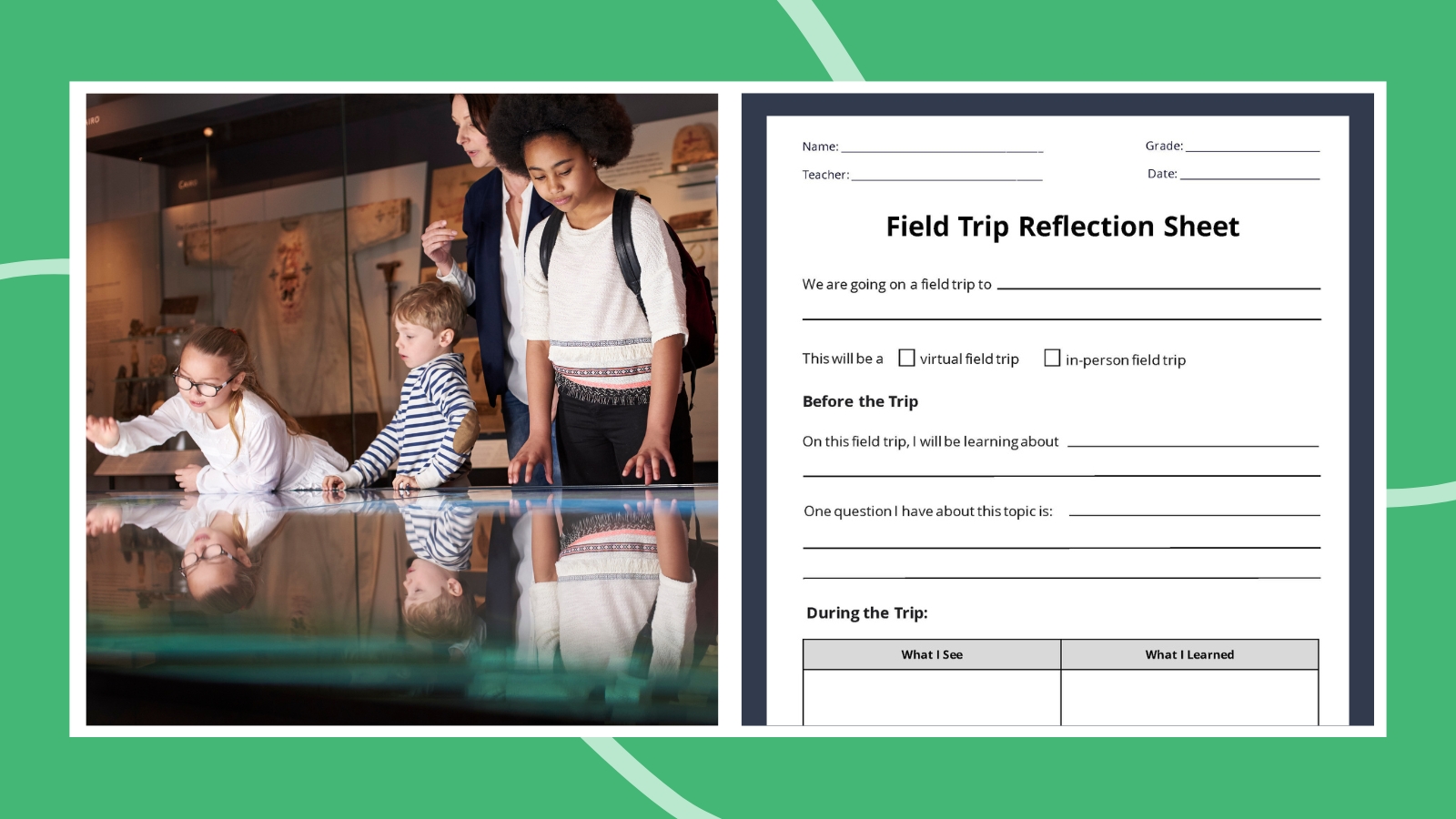
Field trips are amazing! They give kids the chance to explore a new place, learn more about specific topics, talk to experts, and see demonstrations and examples you just can’t do at school. Whether you’re taking a field trip to a local library or zoo or you’re participating in a virtual field trip to a space center or aquarium, you’ll want the field trip to be a pivotal learning experience. That’s where our Field Trip Reflection Sheet comes in.
The impact field trips have on students often has to do with how they engage with the information they learn. Incorporating a field trip reflection worksheet helps students focus on what’s important to them and what it means for their learning and life. Get the free Field Trip Reflection Worksheet by simply filling out the form on this page .
What kind of reflection sheets are in the bundle?
You’ll find two field trip reflection sheets, one for elementary schoolers and one for middle and high schoolers. Each reflection sheet works for either in-person or virtual field trips.
Elementary School Field Trip Reflection Sheet
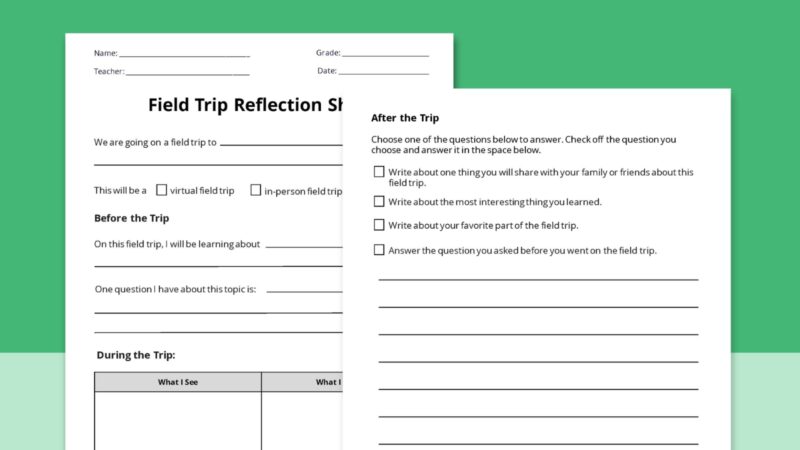
Elementary schoolers can identify where they are going and what they are going to learn about before they head out of the building or log in to the field trip. Then, during the field trip, students record observations and information they learn. After the trip, students choose one response as a reflection to help consolidate their learning.
Middle and High School Field Trip Reflection Sheet
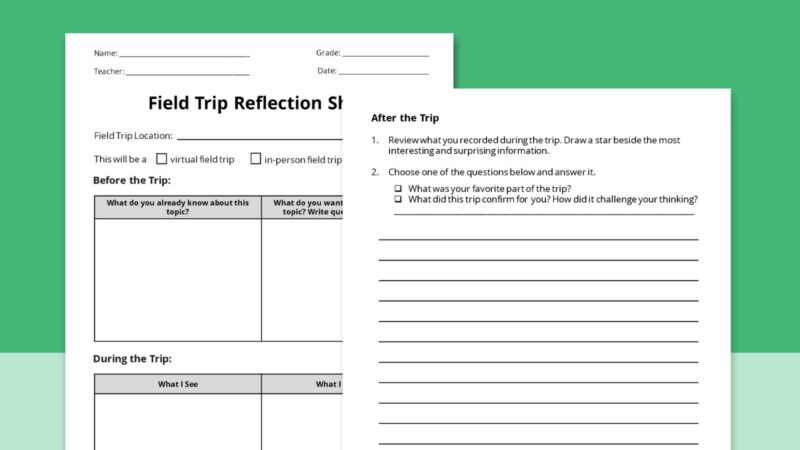
Before the trip, older students activate background knowledge so they’re primed to connect new information with what they already know. Once on the trip, they record observations and information. After the trip, students can choose a question or answer a teacher-directed question to consolidate what they learned.
What are some field trip reflection questions?
Here are ideas for field trip reflection questions that you can incorporate into the Field Trip Reflection Sheet:
- What was the most important thing you learned on today’s field trip?
- What should someone else know about this topic?
- What was your favorite part of this field trip?
- Who else would enjoy this field trip and why?
- How does the information you learned on today’s field trip connect with what you already knew?
- What is one way that the information you learned today confirms what you already knew? What is one way that it challenged what you already knew?
- In five years, what will you remember from this field trip?
Use the Field Trip Reflection Worksheet as a way to keep students focused. You can also use it as an exit ticket or assessment after the trip. This is especially helpful for field trips that require parent chaperones as you can see what students were doing during the trip and provide some accountability for students’ learning.
Get your free Field Trip Reflection Sheet printable!
To get your free printable bundle, just fill out the simple form on this page for instant access.
Need field trip ideas? Check out these 260+ field trip ideas (in-person and virtual).
You might also like.
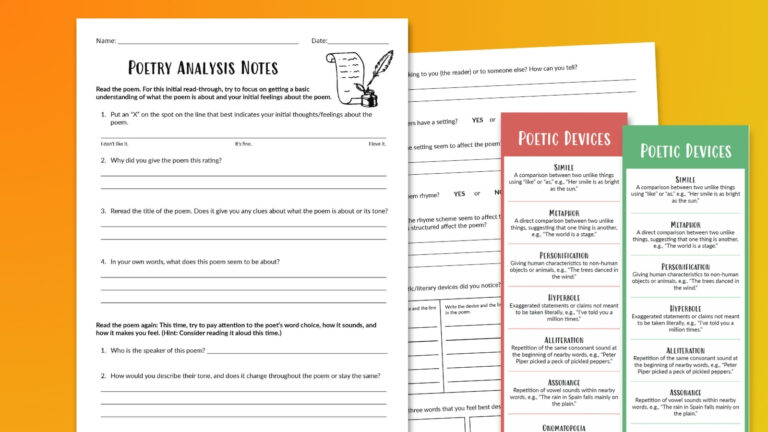
Poetry Analysis Worksheet and Bookmarks (Free Printables)
Make thinking deeply about poems easy with these fun, thought-provoking questions. Continue Reading
Copyright © 2024. All rights reserved. 5335 Gate Parkway, Jacksonville, FL 32256
- Manage Account
Producer BNYX Partners With Field Trip Recordings & Capitol Records
Yeat's Lyfestyle Corporation will be involved across all music and marketing for BNYX.
By Carl Lamarre
Carl Lamarre
- Share this article on Facebook
- Share this article on Twitter
- Share this article on Flipboard
- Share this article on Pinit
- + additional share options added
- Share this article on Reddit
- Share this article on Linkedin
- Share this article on Whatsapp
- Share this article on Email
- Print this article
- Share this article on Comment
- Share this article on Tumblr

See latest videos, charts and news
Nicki Minaj
Travis scott, metro boomin and future's mastering engineer reveals their secret sauce, trending on billboard.
BNYX expressed his gratitude, telling Billboard : “I’d like to thank God, my manager, and Rick Owens.”
BNYX carved out a formidable lane for himself on the hip-hop side, working with the likes of Drake, Travis Scott, Nicki Minaj and his running mate, Yeat. BNYX produced four records from Yeat’s 2023 album AftërLyfe and Drake’s “Search & Rescue,” which debuted at No. 2 on the Hot 100 last year.
The partnership with Field Trip and Capitol will enable BNYX to release his debut album and single soon. Fans of the BNYX and Yeat tandem can rejoice, as the producer will join the “IDGAF” rapper on a soon-to-be-announced run of special shows this summer.
Get weekly rundowns straight to your inbox
Want to know what everyone in the music business is talking about?
Get in the know on.
Billboard is a part of Penske Media Corporation. © 2024 Billboard Media, LLC. All Rights Reserved.
optional screen reader
Charts expand charts menu.
- Billboard Hot 100™
- Billboard 200™
- Hits Of The World™
- TikTok Billboard Top 50
- Song Breaker
- Year-End Charts
- Decade-End Charts
Music Expand music menu
- R&B/Hip-Hop
Culture Expand culture menu
Media expand media menu, business expand business menu.
- Business News
- Record Labels
- View All Pro
Pro Tools Expand pro-tools menu
- Songwriters & Producers
- Artist Index
- Royalty Calculator
- Market Watch
- Industry Events Calendar
Billboard Español Expand billboard-espanol menu
- Cultura y Entretenimiento
Honda Music Expand honda-music menu
- Search Please fill out this field.
- Manage Your Subscription
- Give a Gift Subscription
- Newsletters
- Sweepstakes
Meghan Markle and Prince Harry to Visit Nigeria in May for a Special Reason
The Duke and Duchess of Sussex will highlight Harry's Invictus Games during their trip to Nigeria in May
:max_bytes(150000):strip_icc():format(webp)/ERIN-HILL-_small-3ca66f1b802e465a88bb8940124770a2.jpg)
Rebecca Blackwell/AP
Meghan Markle and Prince Harry are headed to Nigeria!
The Duke and Duchess of Sussex have accepted an invitation to visit the country in May on behalf of its Chief of Defense Staff, the highest-ranking military official, PEOPLE confirms.
On May 8, Harry, 39, will attend the Invictus Games' 10th anniversary celebration at St. Paul's Cathedral in London. Soon after, he will be joined by Meghan, 42, in Nigeria.
During their visit, the couple will meet with service members and will take part in a variety of cultural activities.
The visit will highlight Harry's Invictus Games, which welcomed 500 athletes at last year's event in Germany, with 21 nations in attendance, including Nigeria. Nigeria, along with Colombia and Israel, were new entrants at the Invictus Games last year.
The Minister of Defense, Alhaji Mohammed Abubakar Badaru, who attended last year's event in Germany, has expressed willingness to host the games should Nigeria be granted the opportunity.
Chris Jackson/Getty
In a statement, Brig Gen Tukur Vusau, Acting Director of Defence Information in Nigeria, said: “The visit is to consolidate Nigeria's strong hold at the game and the possibility of hosting the event in later years."
During last year's Invictus Games in Düsseldorf, Germany, Meghan and Harry spent time with the Nigerian team, whom Harry said his wife was supporting during his opening speech .
"Now, I'm not saying we play favorites in our home, but since my wife discovered she's of Nigerian descent, it's likely to get a little bit more competitive this year," he joked.
Can't get enough of PEOPLE's Royals coverage? Sign up for our free Royals newsletter to get the latest updates on Kate Middleton , Meghan Markle and more!
In 2022, the Duchess of Sussex revealed on her podcast Archetypes that she had learned she was 43% Nigerian following a genealogy test.
Harry and Meghan posed for a photo with Team Nigeria and the national flag, and the squad presented them with a plaque from the Chief of Defense — plus a new nickname for Meghan.
The Duchess of Sussex received the name “Amira Ngozi Lolo,” which bears a royal meaning. Amira is the name of a warrior princess from a legend, while Ngozi means "blessed" and Lolo means "royal wife."
Related Articles
Body found in Iowa farm field confirmed as that of trucker who went missing in November
A body found in a northwest Iowa field has been identified as that of a missing truck driver , discovered not far from where his abandoned rig was found on an isolated highway just before Thanksgiving.
But details of his death remain a mystery.
The Iowa Department of Public Safety said Thursday the state medical examiner’s office had conducted a forensic autopsy, and authorities identified the body as that of David Schultz, 53, with dental records. The department said authorities do not suspect foul play in his death. Preliminary autopsy results showed no signs of trauma or serious injury, the agency said. Further results are pending.
The department said someone in his field discovered a body Wednesday, near where Schultz’s semi was found parked in the middle of the road on Nov. 21.
Schultz’s wife, Sarah, told reporters on Thursday that the person discovered was wearing boots that matched her husband’s, and his keys were found in the pants pocket.
The discovery, she said, brought a mixture of relief and sorrow.
“I’m glad we know where he is now,” Sarah Schultz said. “There’s still a lot of questions. Things don’t make sense.”
Schultz, of Wall Lake, Iowa, left home late on the night of Nov. 20 to pick up a load of pigs from a hog confinement near Eagle Grove, Iowa. He was expected to deliver the pigs the next morning to a livestock dealer in Sac City, Iowa, a small farming town about 90 miles (145 km) northwest of Des Moines. When he didn’t show up, no one could get him on the phone.
Sarah Schultz reported him missing, and the truck was found later that afternoon, less than 10 miles (6.2 km) northeast of his destination. The pigs were still in the trailer. Schultz’s wallet and phone were inside his rig. His jacket was on the roadside.
Jake Rowley, the regional team leader of United Cajun Navy, a nonprofit search-and-rescue organization that helped with the search, said local law enforcement agencies searched the area where the body was found immediately after Schultz went missing, including with drones. More than 250 volunteers searched an additional 100,000 acres.
An unanswered question, Rowley said, was whether the the body “was there the entire time,” or if it was recently moved to the spot where it was found.
Sarah Schultz described her husband as a devoted family man who stressed to his kids the importance of being respectful and working hard.
“He was such a good father,” Sarah Schultz said. “It’s not fair.”


IMAGES
VIDEO
COMMENTS
Plan Your Schedule. Arrange Your Supervision. Create a Permission Form. Decide Who's Allowed To Go. Tie in Your Field Trip to Your Curriculum. These are the steps you will need to cover for your field trip plan. The order of these steps may be different for you, but be sure to think about all of these points. 1.
Field trips are a quintessential school experience. You usually only get one or two a year so it's important to do it right! ... Grocery store: Go behind the scenes at the supermarket, and use this trip as the foundation for lessons on healthy eating. Park: From local playgrounds to majestic national parks, it's always worth getting kids ...
Search for class trips by geographic area, distance, and venue name or keyword. Find art museums, theater, dance, and music concert field trips. Find class trips to children's museums, petting zoos, and kids' shows. View history museums, government & civics, historic sites, living history museums, and multicultural field trip ideas.
would be unusual and a bit inelegant but might possibly be used as a shortened way of saying: I was away from home (or base) for the purpose of making a field trip. i.e. the emphasis is on the being away rather than the field trip itself. In the absence of compelling reasons to do otherwise, I would go with the simple and safe usage: I was on a ...
The classic preschool field trip goes online! You can have your pick of dairy farm field trips, but we like this one from the Dairy Alliance and this one from Stonyfield Organic. Farm Food 360 gives students the opportunity to immerse themselves in Canadian farm and food tours—from raising pigs to making milk and cheese. We're also loving these virtual egg farm field trips from the ...
There you go! 35 field trip ideas to get the wheels on the bus turning. There are so many creative ways to engage students in hands-on learning experiences outside of the classroom. Whatever you end up doing, know that your efforts are worthwhile, and the memories will last your students a lifetime.
A micro field trip to a nearby park or around school grounds, for example, can be a great opportunity to "enhance a unit on nature and wildlife while reinforcing vocabulary for senses, colors, and the concepts of quantity and size," Schwartz writes. "Afterwards, students might write descriptive stories set in the place you visited using ...
Make it a point of pride and reward them afterward for a job well done. Give your students a learning task ahead of time. Your students should show up for the field trip with a base of knowledge on the subject at hand, as well as questions to answer before returning to the classroom. Spend some time in the weeks before the field trip discussing ...
10. Ropes Course. You might consider this a "just for fun" field trip, but students will learn teamwork, cooperation, and strategy through the obstacles. Ropes courses are self-esteem boosters, and fifth graders moving on to middle school could use a good dose of confidence. 11.
If your teacher wants a technical field trip report, start with an abstract -- a brief summary paragraph -- that clearly explains where you went and what you learned during the field trip. Use research or literature to support your statements in your field trip report. For example, if you visited a local arboretum, you might use information ...
field trip: [noun] a visit (as to a factory, farm, or museum) made (as by students and a teacher) for purposes of firsthand observation.
9. Go on a Hike. This is a good field trip for many reasons. Exercising is an important thing to get in the habit of at a young age, and nature is something that everyone should appreciate. And, as if that was not enough, learning about rocks and rock formations is fascinating, too.
The Educational Value of Field Trips. Taking students to an art museum improves critical thinking skills, and more. Jay P. Greene joined EdNext Editor-in-chief Marty West to discuss the benefits of field trips, including how seeing live theater is a more enriching experience to students, on the EdNext podcast.
Field trip. A field trip or excursion is a journey by a group of associated peers, such as co-workers or school students, to a place away from their normal environment for the purpose of education or leisure, either within their country or abroad. When done by school students as organised by their school administration, as it happens in several ...
1. BBC. I remember we went on a field trip. 2. The New Yorker. When the children went on a field trip, the program's door was locked for the first time anyone could recall. 3. The New York Times. During time off around shows in Johannesburg and Cape Town, Lissack went on a field trip with Ash frontman Tim Wheeler.
[Verse 2: Lil Durk] Cut the cuff off my wrist, I'm masseuses Popped a Perc' and I'm all in her uterus I'm so nasty, I fucked on a voodoo bitch Put my Prada, Chanel and then go ludicrous It's a hit ...
Regardless of gender, ethnicity or socioeconomic status, students who go on field trips have better grades, higher graduation rates from high school and college, and greater income [1]. In fact, in a study conducted by the NEA, 89% of adults said educational trips had a positive, lasting impact on their education and career because the trips ...
Different Learning Modalities. Information is presented to students in a way that meets different learning modalities. Field trips provide students with the ability to learn by doing instead of just passively listening to the information being taught in class. Students are exposed to new experiences that, hopefully, broaden their horizons.
A comprehensive guide to field trips, covering their benefits, challenges, tips for planning, how they enhance learning in the classroom, and creative ideas for field trips. ... A study conducted by the University of Texas found that students who went on field trips were more likely to remember the material they had learned than those who did ...
Academic preparation. Preparation is key to a successful field trip. The field trip should tie in with a unit or concept students have been studying in class. This will ensure that they have learned the appropriate English vocabulary and concepts necessary to make meaning from the field trip experience. Teachers should introduce the field trip ...
Experiential learning is authentic, first-hand, sensory-based learning. Experiential activities explore, touch, listen to, watch, move things, dissemble and reassemble. Learning consists of grasping an experience and then transforming it into an application or result (Kolb, 1983).
FIELD TRIP definition: 1. a visit made by students to study something away from their school or college: 2. a visit made…. Learn more.
+ Reba McEntire will host the 59th Academy of Country Music Awards on May 16 at 8 p.m. EDT/7 p.m. CDT/5 p.m. PDT, streaming live on Prime Video from Ford Center at The Star in Frisco, Texas.
Field trips like the one Duke went on are very beneficial for shelter dogs as they are an excellent stress reliever for dogs, according to the website BeChewy. It also gives dogs one-on-one ...
The success at home was part of a larger 12-dual winning streak for the duo, which included three wins in a row against No. 2 Stanford, No. 7 California and No. 12 Arizona State. The Huskies went 7-2 as a team at home. In their first year playing together, Henson and Wilcock earned the second most wins by a Husky pair in a single season. The ...
LC4′s 'Dogs on the Town Field Trip' looking for volunteers Local boil advisories: Broadway South Shopping Plaza affected Father arrested for baby in car alone to go to JACK Casino: Police
The impact field trips have on students often has to do with how they engage with the information they learn. Incorporating a field trip reflection worksheet helps students focus on what's important to them and what it means for their learning and life. Get the free Field Trip Reflection Worksheet by simply filling out the form on this page.
Following an impressive run in 2023, producer BNYX officially partners with Zack Bia's label Field Trip Recordings and Capitol Records.In addition, BNYX will work with Yeat's Lyfestyle ...
Meghan Markle and Prince Harry, Duke of Sussex take selfies with fans as they attend the Ukraine-Nigeria sitting volleyball match at the Invictus Games on September 14, 2023 in Duesseldorf, Germany.
The Iowa Department of Public Safety said Wednesday, April 25, 2024, that a body was found in a farm field near where David Schultz's semi was found parking on a two-lane highway. (Family photo ...